

le5stagioni.it/en
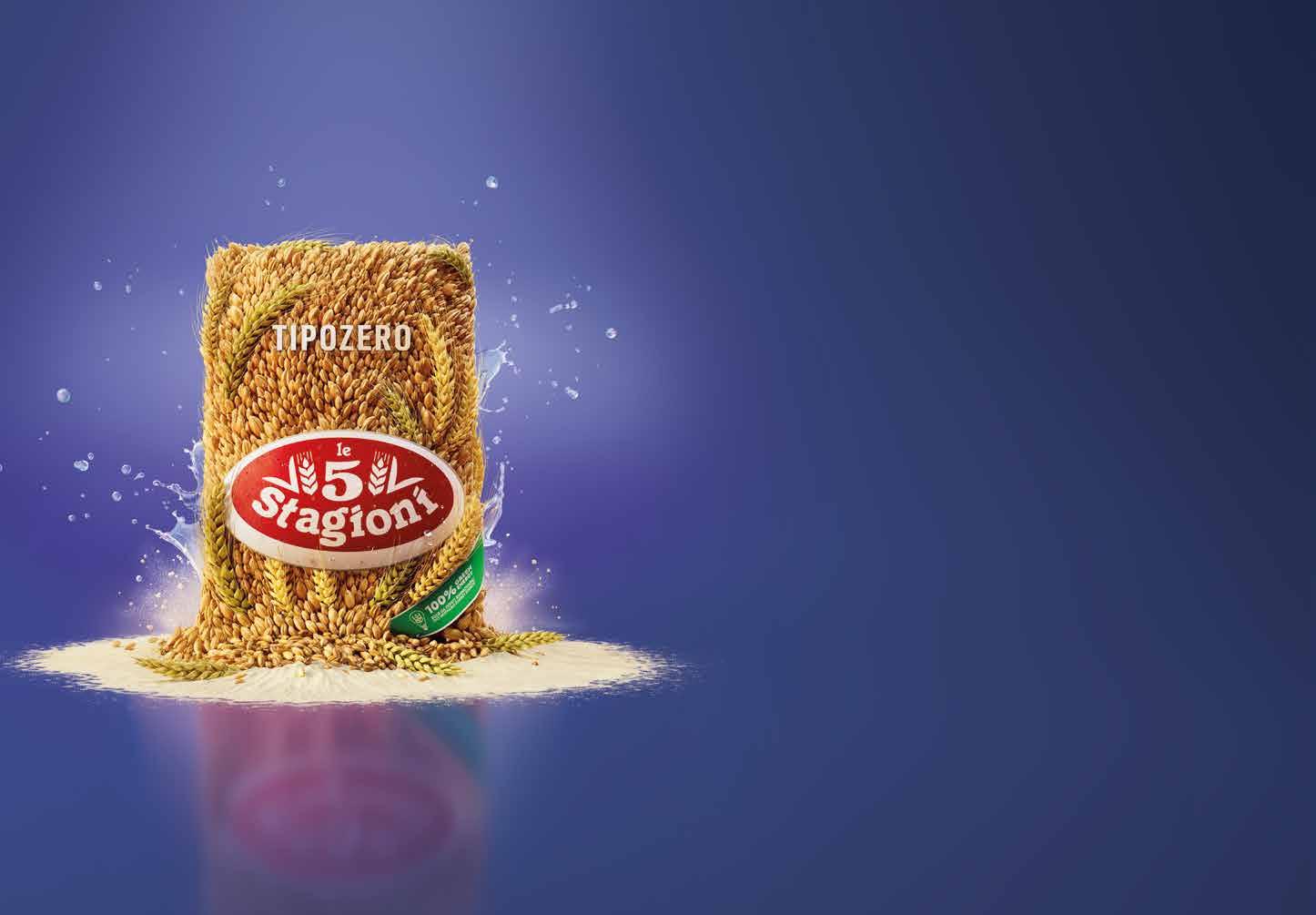



le5stagioni.it/en

From the experience of Le 5 Stagioni, comes TipoZero Superiore, the flour obtained from 100% Italian wheat, versatile and unique, suitable for all types of dough.
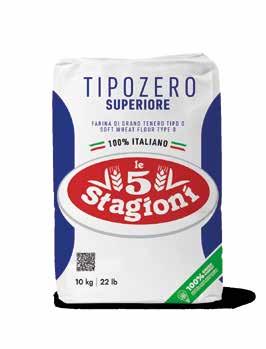
BY ANTONIO PUZZI
I have heard all too often that we need to recover the relationship between man and nature... and we have never succeeded. Perhaps because the perspective is wrong. We do not need to recover a relationship, we need to realize that we ourselves are nature. The flour we use to make our pizzas is nature (the one without additives anyway), the artisanal experimentation of a product is nature, the search for ingredients is nature and even the person who brings the “pizza” product to life every day is nature.

This issue of Slices endeavors to explore our "being nature" by taking a journey that invites us to reflect on what Italian cuisine is; a cuisine so loved by you who are outside the national borders. And it does so by remembering that there are not only "unique and exclusive experiences" like TikTokers and Instagrammers want us to believe, but also places where we don’t want to go, but where we are called to improve their existence. As Fabrizio De Andrè said in a famous song: “Nothing is born from diamonds, flowers are born from manure”.
Come with us through the alleys of Naples and the dirt roads of Africa, discover what it means to “drink responsibly”, imagine a future that takes into account a word that is too often forgotten or “betrayed”: wellbeing. We have tried to break down and reconstruct this concept in the Manifesto of the Relational Pizzeria, written during the XXXI World Pizza Championship in Parma. We dedicated it to a person who gave the greatest impetus to the world of Pizza in Italy, effectively reinventing its story: Giuseppe Vignato.
WELCOMING. ETHICAL. INCLUSIVE.
BY ANTONIO PUZZI
GIUSY FERRAINA
Exporting culture
BY ANTONIO PUZZI
Mail to Readers
BY THE EDITORIAL STAFF
BY GIUSY FERRAINA
THE EDITORIAL STAFF
GIAMPIERO RORATO
ANTONIO PUZZI
COREY WATSON, FROM OREGON TO UKRAINE BY
ANTONIO PUZZI
DOMENICO MARIA JACOBONE The language of food
VICTOIRE GOULOUBI: THE CUISINE OF KNOWLEDGE
BY NOEMI CARACCIOLO Raw and cooked in beer BY ALFONSO DEL FORNO
NOEMI CARACCIOLO

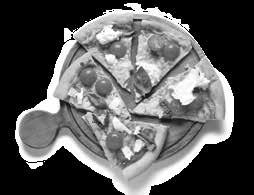

After the 9/11 attack on the Twin Towers in 2001 and George W. Bush’s response on the following October 7, the operation “Enduring Freedom”, the bombing of the territories from which the kamikazes came, there was an expression that was used by the American press to define the objective of that intervention that immediately made me shudder: “exporting democracy”. At that time, I had not yet undertaken the anthropological studies
that later contributed to forming my thinking but that idea of “exporting democracy” scared me.
I wondered: is democracy a product? Can it be compared to a “commodity”, that is, a transferable and marketable good? Or, rather, is democracy a common good, an expression of a society’s culture? And if so, is culture exported or constructed? For me, there is only one answer: it is contaminated.

Well, I took a wide angle to bring you my thoughts on something that is currently greatly interesting me in my research. In recent years, I have witnessed the proliferation of professional training courses; if, in the past, there were in fact only a handful of pizza schools in Italy, and those for chefs were State-recognized organizations, today there is a veritable explosion of educational offerings. Given that I believe this is an excellent sign, I began to wonder to what extent and in what way the offer is valid around the globe. In fact, there are more and more training institutions mainly on the
American and Asian continents (but, to a lesser extent, also Africa and Australia) which are a valid investment for a profitable economic return.
The question I ask myself is, however: does it make sense to “export culture”? Is it right to teach the recipe for Neapolitan pizza or fried pizza or Genoese focaccia in another country? Mind you, I am not asking whether it is right to teach these recipes to “foreigners” (as was also discussed in the past) because for me it is clearly right (but also proper) that anyone who wants to approach a topic, a study, a theme, should be put in the
most appropriate conditions to do so. My question is more about whether it is right to go and fulfill these teachings in another country.
And the reason is easily said: we keep repeating that our pizza is an expression of a culture, and therefore, how can we think of transferring and making people understand the contents of a culture without experiencing it directly in the country of origin? Would you ever think of calling yourself an expert on kangaroos without ever having observed their movements and habits in their natural habitat and instead going to study them in


a zoo? I would like, therefore, to offer some suggestions on the matter, in these very pages that we have chosen to dedicate to the theme that Slow Food has given to its most important event, Terra Madre (Motheland ed.): We Are Nature. Indeed, if it is true that “we are nature,” we cannot forget that the relationship between nature and culture is far from defined. The boundaries within which we move are subject to constant reflection. Here, then, we cannot disregard the idea that to experience a culture, one must immerse oneself in “its” nature. To do so, it is necessary to follow - in my humble opinion - some small tips:






























The study of something living like pizza and, in particular, of certain types of pizzas, cannot be separated from the study of a territory, of a social environment, of the people who have made that product an icon, a symbol recognizable by the whole world. That is why we must first aim to organize courses on Neapolitan fried pizza in Naples; on gnocco fritto in Emilia-Romagna; on Chicago style in Chicago, and so on.
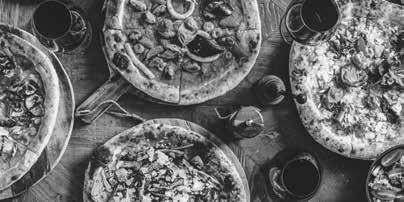
In fairs and events outside the territory of origin of a given product, it is right to “tell stories,” not simply to tell the story of the product but to bring it to life, reconstructing the settings and sociocultural context of the territory of origin as far as possible.
When we go beyond the borders of our own territory, we should notclaim to have superior knowledge but it is right to set oneself up to listen to other cultures, allowing oneself to be contaminated by that message and trying to combine, where possible, our culture with that of the place we are in.
During a recent trip to France, I had the opportunity to study a small group of the many migrants who moved there from Italy. There was one thing I liked best of all: when asked if they felt Italian or French, many said they did not know the answer. Is there a more beautiful message?






www.cuppone.com




Three days to try to end an era, to build a roadmap, to tell each other that “another world is possible”. Three days, jacketless but in shirtsleeves. In other words, three days without catwalks and speakers but with many colleagues.
This was this year’s “ World Pizza Forum” (born in 2019 from an idea of David Mandolin’s) and curated by “Pizza e Pasta Italiana” for the “XXXI World Pizza Championship” in Parma. Over these three days, we tried to talk to those who believe that shouting and waging war (not only in the constantly increasing world war scenarios but also in the workplace and in interpersonal relationships) is not the only way to live, or even that it is perhaps the worst. This is why we dealt with gender differences and identities,

racism, social commitment, disability, recognition of the professionalism of pizza chefs, inclusivity and conviviality in the meetings that went under the general title of “Differently Pizza”. To understand how this year’s meetings came about, I think it is necessary to go back to March 2020 when, in the dawn of Covid, I received a phone call from an extraordinary man, who I was honoured to have as a friend. He told me that people could no longer stand loud, aggressive marketing and that, for this reason, he was trying to create and bring to the present day what he believed would be the marketing style of the future, namely “relational” marketing. That man was Giuseppe Vignato, the one who - in no uncertain termsrevolutionized the history of pizza. That phone call was the last I had with him, because Giuseppe died of cardiac arrest a few weeks later.
And thinking of him four years later,”Pizza e Pasta Italiana” wanted to be the leader in the development of the Manifesto of the relational pizzeria, a ten-point decalogue that you can read in the pages that follow, built thanks to the reflections made between 9th and 11th April in Parma with “travel companions” who really know about pizza and communication, namely: Alfonso Pecoraro Scanio (former Minister of the Environment and Agriculture), Senator Bartolomeo Amidei, chef Victoire Gouloubi; Antonio Pace, founder and president of the Associazione Verace Pizza Napoletana; Barbara Nappini, President of Slow Food Italy; Franco Manna, founder of “Rossopomodoro”; Alessandro Condurro,

CEO of “Pizzeria Da Michele in the World”; Carlo Fumo, author and director of “PizzaGirls” (now on air on Rai Italia and Rai Premium) and television and film producer; Anna Kauber, landscape designer and director; Pierluigi Simmini, head sales manager of “Too Good To Go- Italia”; Riccardo Agugiaro, CEO of “Agugiaro & Figna Molini” and Romolo Verga, CEO of “Demetra Food”. Together with them, the pizza chefs who offered their contribution were: the dean of Neapolitan pizza chefs Antonio Starita, former Vice President of the Neapolitan Pizza Chefs Association; Corey Watson, creator of the “Pizza for Ukraine” project; Francesca Gerbasio, winner of the chiocciola award of “Osterie d’Italia” published by Slow Food; Salvatore Lioniello, Frank Cavaliere, Giuseppe Lucia, Pino Longo, Giulia Zanni, Francesca Calvi and Stefano Callegari.
BY ANTONIO PUZZI
Let me say: a true “royal lineup”! This is why I publicly and personally thank the editorial staff of “Pizza e Pasta Italiana” for getting up on stage to present the overview of the three days’ work, during the awards ceremony of the XXXI World Pizza Championship.
I am therefore happy to present to you the “Manifesto of the Relational Pizzeria”, in the hope that, at least in some points, Giuseppe, we have honored your memory.
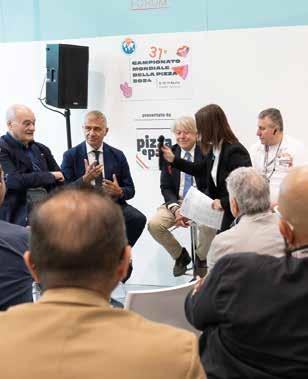
Dedicated
to Giuseppe
Vignato
INTRODUCTION
Pizza is born from fertile soil, expresses the biodiversity of the territory and tells the story of the people who live there. Pizza is a cultural and human synthesis of our lands. Pizza is an identity in which we should see ourselves and which we should express.
1. STORIES | The relational pizzeria is a place of stories. Each pizza is a story, an idea, a person, a value, a landscape: it is memory.
2. AWARENESS | The relational pizzeria is aware.
It has respect and listens to the past, being aware of the present.
3. KNOWLEDGE | The relational pizzeria is a place of knowledge. It feeds on technique, knowledge and curiosity. It can and must be a place of culture and knowledge of raw materials, of the territory, of their history and their worth.
4. SUSTAINABILITY | The relational pizzeria is “zero waste” and fights the effects of climate change. It places waste reduction at the center of its identity, avoiding the unnecessary consumption of ingredients and precious resources, implementing positive actions through the balancing of the energy resources used.
5. ACCESSIBILITY | The relational pizzeria is accessible.
It is an inclusive, welcoming and accessible place for everyone, from employees to clients, thanks to the elimination of socioeconomic barriers, as well as architectural ones.
6. LANGUAGES | The relational pizzeria speaks the language of thought, emotions and technology. It reduces communication barriers and facilitates the expression of emotions, also through the use of inclusive technologies.
7. DIVERSITY | The relational pizzeria breaks down barriers andwelcomes diversity.
It puts knowledge and management of raw materials first, accounting for food choices dictated by religion, ethics and well-being.
15 —
8. RESPECT | The relational pizzeria has respect.
Respect for employees and collaborators, respect for users and all the actors in the supply chain, respect for gender identities: the relational pizzeria has infinite colors.
9. CONNECTION | The relational pizzeria is connection.
It is a place to cultivate real relationships and encourage interaction between people. It is a bridge to create an experience of sharing space and flavors with others in the world: pizza is closeness.
10. FUTURE | The relational pizzeria builds the future. It imagines and animates it according to the principles of hospitality, ethics and inclusion.
BY ANTONIO PUZZI
The pizzeria is the format of the relationship: transversal, able to speak to everyone and - at the same time –the advanced evolution of a concept that finds its extreme gastronomic, cultural and experiential expression in its union with cuisine. Today’s pizza helps to dream and build a better tomorrow.
Parma, Thursday, 11th April 2024
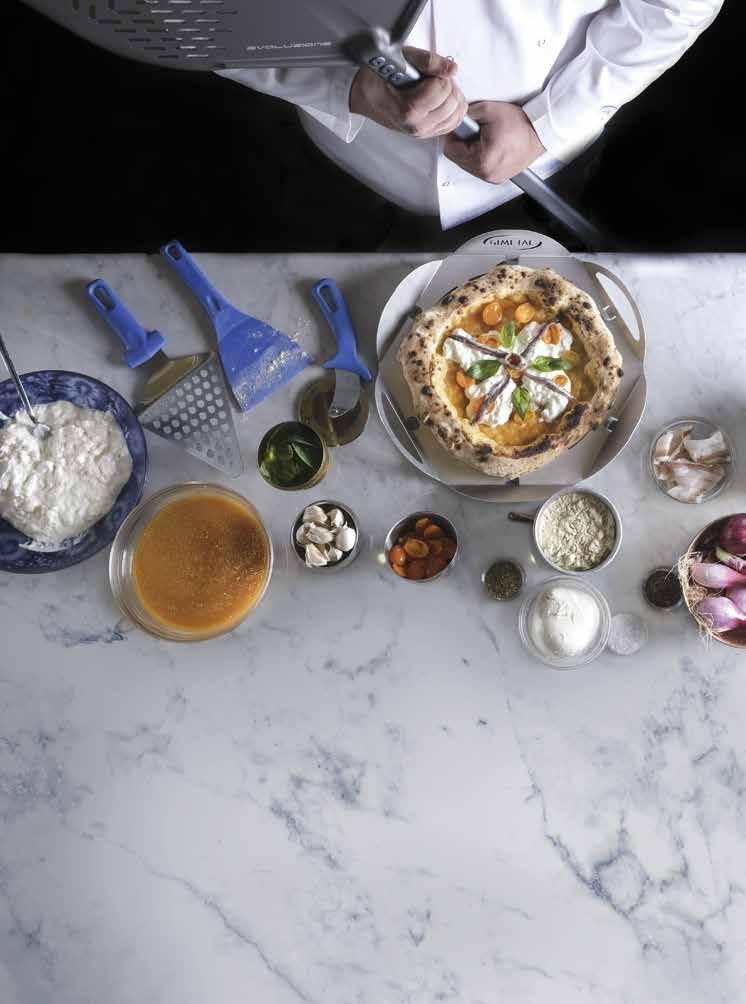


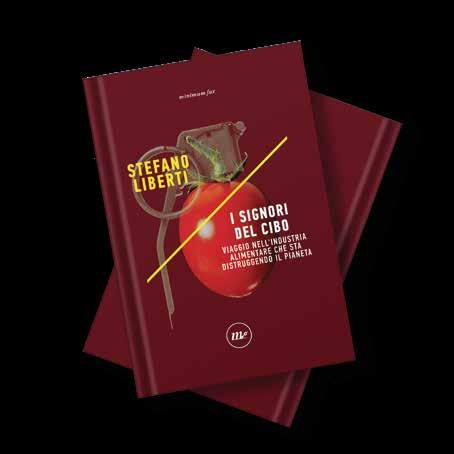
Author: Stefano Liberti
Publisher: Minimum Fax
Year: 2021 (first edition 2016)
Pages: 316
Price: € 18,00
Released two years ago by Minimum Fax, I signori del cibo (The Lords of Food) by Stefano Liberti is already a great classic for those who love to know more about those who decide what we put in our stomachs. According to UN forecasts, in 2050 there will be 9 billion people on Earth and the question on everyone's mind is: ‘How will we feed ourselves, if resources are increasingly scarce and the inhabitants of hyperpopulated countries like China are suddenly changing their eating habits?’
Stefano Liberti therefore presents us with an important reportage that follows the supply chain of four food products: pork, soya, canned tuna and tomato paste, to observe what is happening in a sector devoured by a financial aggressiveness intent on turning the planet into a giant meal. Liberti's is a two-year global investigation into the discovery of soya monocultures in the Amazon that are destroying the Earth's largest supplier of biodiversity, but also investigating what is really in the cans of tuna we eat, right up to entering a Chinese slaughterhouse. The investigation, however, goes as far as Italy, to Apulia, where exploited Ghanaian workers harvest tomatoes in the same way as they did on their land on the other side of the Mediterranean.
Throughout the pages of this book, a sequel to the successful Land Grabbing, Liberti
informs us of how many and which large industrial groups have grown in recent years ‘engulfing the small and medium-sized players in the supply chain thanks to their economies of scale. So much so that they now control the food market, directing our tastes and defining the flavour of what we eat'. In an interview with La Repubblica in 2016, Liberti said: ‘Few people know that China's Shuanghui is the world's largest pork processor - and that in 2013 it acquired the American company Smithfield, already number one in the US, for $7.1 billion. Few people are familiar with Cargill, a company that markets soya, cereals and many food staples from one end of the planet to the other. Yet Cargill has a turnover that is five times that of McDondald's and four times the GDP of Bolivia. In recent years, these groups have grown by engulfing small and medium-sized players in the supply chain with their economies of scale. And they now control the food market, directing our tastes and defining the flavour of what we eat'. The Lords of Food is, therefore, an investigation that sheds light on the power games that regulate the food market, and that we need to know about if we really want to build our future on this planet.
In Naples and Campania friarielli, in Rome broccoletti, in Tuscany rapini and in Puglia, cime di rapa: different in name but the same in taste, this very popular vegetable puts everyone in agreement for its goodness. Peeled, washed with care, boiled in salted water and dipped in hot oil, the secret of Friarielli la Torrente is the selected raw material.
A versatile product, perfect for pizza, and the ideal partner of those in the kitchen who seek taste and quality on a daily basis.


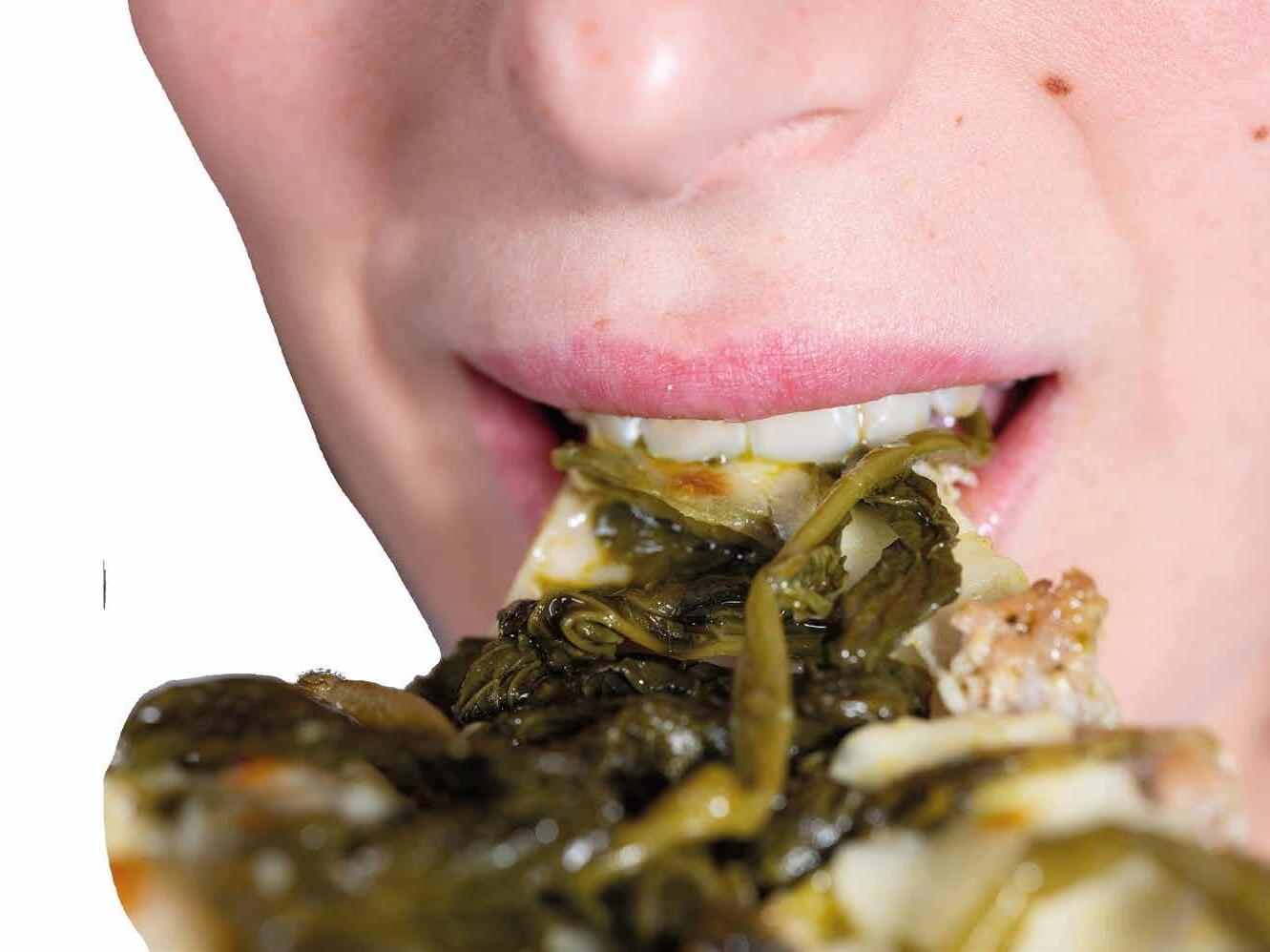





‘You have all of this?’ asks Lissandro in Venetian dialect to the restaurateur Menego, after listening to the list of roasts. And the 18th-century Venetian innkeeper replies to him almost offended: ‘Order it and don’t doubt anything. we are in Venice, let it be known, and there is everything at all hours and in the blink of an eye you can find anything you want. Just order it!
The good Lissandro, a rich Venetian bourgeois, had asked the innkeeper about the roasts available in his restaurant and was puzzled by the list proposed by the host: ‘Pork loin, pork rump, wild boar, lamb, goat kid, chickens, turkeys, capons, ducks, quags, hens, cocks, perches, pheasants, long-beaks, fig-headed warblers.'

A great variety of meats and farmyard animals, sheep, goats, birds of the valley, feathered and furry game, from the plains and mountains (and that innkeeper does not mention fish, not requested by the customer), an abundance hard to find in today's best-stocked restaurants.
‘But we are in Venice, let it be known’, exclaims Mr Domenico, one of the many osteria owners with a kitchen in the Doge's city in the 18th century, where you could find anything you wanted and at any time of day.
This conversation between the innkeeper and a customer can be found in the work ‘Chi la fa l'aspetta’ (Who makes it waits for it), written in 1764 by the great playwright Carlo Goldoni (1707-1793) and is a faithful testimony, like so many other passages in his many comedies, of the wide availability of food products, fish, meat, cold meats, cheeses, fruit and vegetables, desserts, wines, liqueurs and coffee in his city during the 18th century and, consequently, of the many dishes that could be made with all these products. And Giacomo Casanova (1725-1798) also gives us an important and qualified insight into 18th century cuisine in Italy in his monumental ‘Histoire de ma vie’, the story and memoirs of his life written in his old age at Dux Castle in Bohemia, where he died.
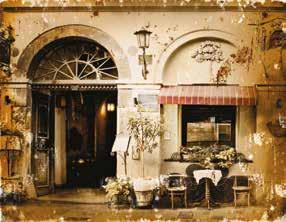
In a recently published and widely publicised book (see, for example, ‘Cook’ in the Corriere periodical of April 2024), entitled ‘Italian cuisine does not exist’, where the two authors - Alberto Grandi and Daniele Soffiati - state that: ‘much of our gastronomy and most food products were born after the economic boom; therefore, during the recent 1970s and we cling to a non-existent heritage out of the need to affirm our identity.’ Clearly, the title of the book plays on a misunderstanding, because in Italy there are hundreds of local cuisines and there is no single cuisine for the whole Italian peninsula. But, as I quote in italics above, the two authors mean something else, namely that the cuisine that foreigners find in Italy today is at the very least artificial, in the sense that it is not an historical cuisine but one that was born and invented in the 1970s, cancelling out that which existed before.
To prove them wrong, I cited the case of Venice, which still today proudly presents - albeit adapted to the changing times - the dishes mentioned by Goldoni in his comedies, and every great city in Italy, from the then Habsburg Trieste, to opulent Milan, rich Savoy Turin, papal Rome, Naples and Palermo at that time under the rule of the Bourbons, everywhere there were varied and abundant products and often fabulous dishes still present in the restaurants and homes of their respective cities.
The kitchens of the 18th century, those of the nobility and the rich bourgeoisie, were opulent. It is enough to read the cookbooks of the time - I quote, among others: Bartolomeo Stefani, ‘The art of cooking well”, Venice, 1662; Vincenzo Corrado, “The gallant cook”, 1773; Anonymous, “The Piedmontese cook perfected in Paris”, 1776; Antonio Nebbia, “The cook from Macerata”, 1781; Francesco Leonardi, “The modern Apicius’, 1790 - to understand the extraordinary richness of the cuisines present on the Italian Peninsula.

The aforementioned authors, who probably wanted to make Italians think, rather than write things that do not correspond to reality, point out in their book that one should not confuse the history of cooking with the history of food.
And this is very true, because for the poor, the vast majority of Italians, up until the 1960s, the diet was meagre and often insufficient, while in the homes of the wellto-do and in the great hotels already in the 19th century they ate very well, perhaps the same dishes that arrived on the tables of the Doges of Venice, the Savoy in Turin, the Grand Dukes in Florence, the Roman Curia, the Bourbons in Naples and Palermo.



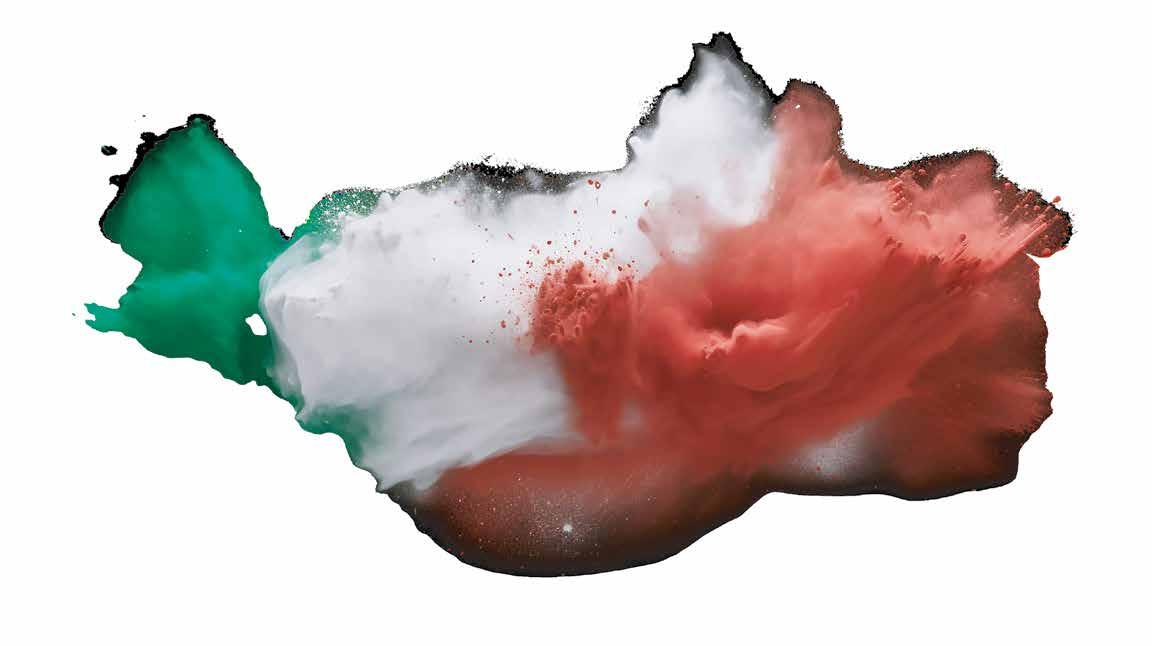
Today, but not as of today, the truly great Italian restaurant industry - within which many fragile appearances are unfortunately hidden, despite having been rewarded by some gastronomic guidesknows a few important things and knows them thanks to a serious culture of those who work there, which is essential in selfrespecting kitchens. First of all, it knows that the cuisine in Italy (to be more precise: the dishes that characterise top quality restaurants), offered to tourists visiting us from all over the world, is the result of a mosaic of cuisines, the natural evolution of the famous grandmother's kitchens, still present in the trattorias of the cities and towns of our Peninsula and islands. These are the authentic, emblematic and characteristic kitchens of the rich Italian food and gastronomic tradition. These kitchens were widespread until the 1960s and 1970s and, in many cases, are still happily alive and well. If much has changed in the so-called ‘great cuisine’ - let's face it - it has been due to the irrepressible aspiration of several chefs to aim for stars and the like, trying to imitate French cuisine, well reflected in the French guide that distributes the stars.
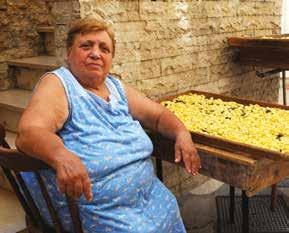
There is no such thing as Italian cuisine in that, apart from a few dishes (e.g.: pasta with Bolognese sauce; pasta carbonara; pasta with tomato sauce, which has recently become popular), each Italian territory has its own cuisine characterised by local dishes and it is from the combination of the many cuisines that Italy has always offered the world a gastronomic mosaic that is difficult to find elsewhere. These cuisines originated in peasant homes, handed down for centuries from mother-in-law to daughterin-law and, for this reason, commonly referred to as ‘grandmother's kitchen’. These ‘traditional’ kitchens, joined by the aristocratic kitchens that were also present everywhere, have gradually evolved over time, either due to the disappearance of some raw material (e.g. free-range chickens, peacocks, wild and spontaneous spring herbs, gentle-beaked birds, sea dates, etc.), or due to the use of increasingly modern operating and cooking techniques, or some industrial ingredient, etc., as has always been the case throughout history.
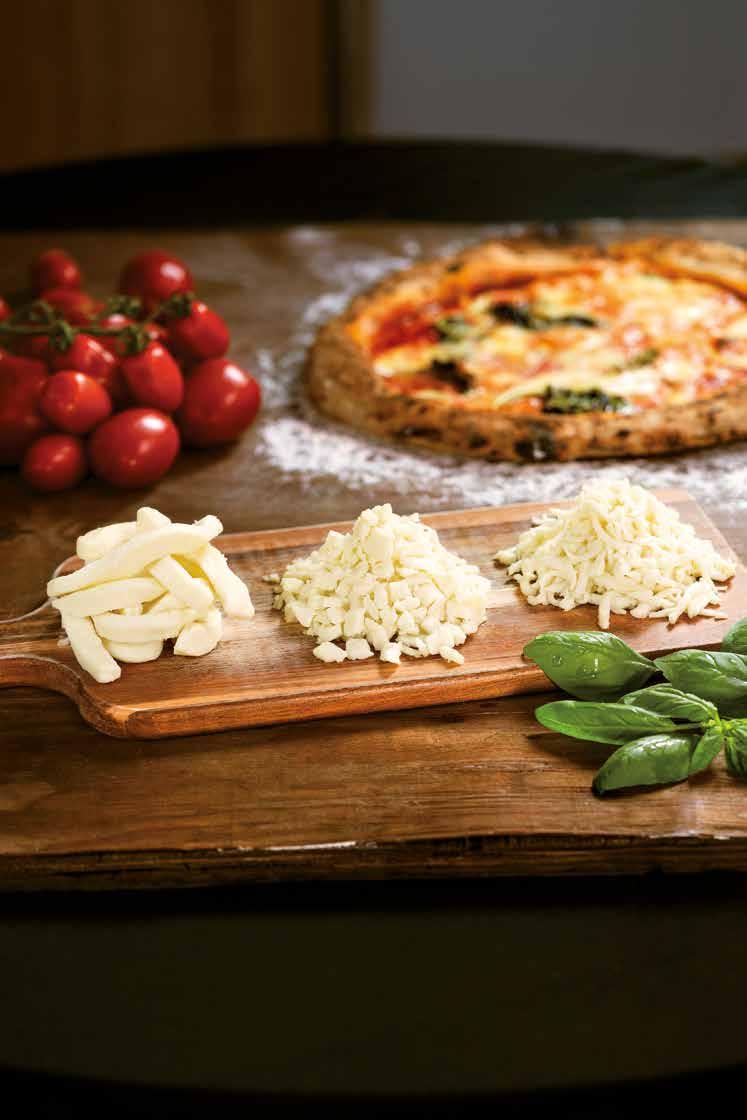


Of course, this story does not include the great and interesting designer cuisines, those of the big names, which have an independent history, even if they sometimes use the same products that grandma used.
Stating, as the two above-mentioned authors did, that ‘the dishes now considered iconic of the Belpaese (Italy ed.) actually came from emigrants from America who returned to their homeland’ may also be true if one refers to the Carbonara that was served to customers in Armando's restaurant in Chicago, as Patricia Bronte recounted in one of her gastronomic guides from 1952, but for risottos, which are many and varied, it is enough to know the Venetian recipes from 1550 onwards and thus the various preparations of ‘stockfish’ (in Venice called ‘baccalà’ - salt cod), ‘moéhe’ (molting green crab), ‘sardines in savor’, etc., to know that they are dishes born in Venice; dishes born at home and not abroad. And, as in Venice, all over Italy. We have taken Grandi and Soffiati's book as a pretext (which I invite you to read in any case) to repeat an invitation that this magazine has been making to cooks since the very first issues: the cuisine of individual places in Italy is a heritage of great historical and cultural value, as well as being the result of the long and serious work of many generations;

a cuisine that has been able to overcome the severe test of history unscathed, adapting to changing times, tastes and nutritional needs without betraying its roots, and therefore should be considered in its own right as a cuisine of tradition. Presenting this cuisine to the world, in the forms suggested by good taste and aesthetics, is the task of the most serious restaurant industry, the one that cooks for customers and not to win a star, that does not churn out new dishes every year only to have them soon removed from the menu, because true great cuisine is only that which passes from one generation to the next and tells the story, culture and civilisation of a people.





























E-mail: info@scuolaitalianapizzaioli.it
The more you produce, the more you consume. Although the exact equation should be ‘the more you consume, the more you waste’. Obviously, we are talking about food, and when we talk about food waste, we mean that part of goods that is bought but not consumed and then ends up in the trash. And this ‘throwing in the bin’ goes up the agri-food chain and is reflected at all stages: production, distribution and, finally, consumption. With wasted food, in fact, resources such as water, fertilisers, soil, fossil fuels and energy sources of all kinds are also wasted, to which is added economic waste and waste in terms of labour and human resources. This is a global problem because, according to FAO data, national figures on waste are very high: as much as 1/3 of what is produced (one billion tonnes) does not make it to the table, which translated into figures means 15 billion euros.
And it is precisely at the end of the food chain, at the stage of consumption both at home and in restaurants, that the most significant wastage occurs due to bad shopping habits, excessively strict expiry dates, failure to observe label indications on the correct preservation of food, promotions that push consumers to buy more food than necessary, the tendency to serve portions of food that are perhaps too abundant, or to order too much at restaurants driven by gluttony rather than actual hunger. According to data for the year 2023 emerging from the Waste Watcher observatorywhich presents its annual report on the day against food waste (5th February) - we throw away an average of 524.1 grams per capita per week, or about 75 grams of food per day and 27.253 kg per year: which is 12% less than the same survey in 2022 (595.3 grams per week).

A figure that is accentuated in the south of Italy (8% more wasted than the national average) and for families without children (38% more than the Italian average).
Let's take a look, instead, at what happens outside the home and what the reasons are that lead to food waste when eating at restaurants: 3 out of 4 Italians say that they do not have the option of ordering reduced portions, with the result that 48% of people have food left on their plate, but only 1 out of 4 of these ask to take it away. Those who do not do so is because they feel that the amount of leftover food is too little (57%), out of embarrassment (46%) or inconvenience (29%).
On the other hand, with the experience of Covid, more than 34% of Italians take
the so-called ‘doggy bag’ with them when leaving a restaurant, allowing leftover portions to be consumed at home by simply reheating them or used as a base for other recipes. And although it doesn’t always happen, the adverb often is beginning to take the place of sometimes. Even if it is not yet a habit that has caught on in the whole of Italy. Perhaps it should be up to the catering industry to intervene at this point, by helping the customer with a more reserved approach (to avoid embarrassment) and by providing ad hoc packaging or trays, perhaps branded, to take home unfinished food or bottles of wine. In short, creating a service around the concept of ‘non-waste’.
From this point of view there is, therefore, a need for more education and good practices to be adopted and applied and then transformed into lasting habits.
In the pizzeria sector, a distinction must certainly be made between establishments with table service (and consequently closer to the ‘doggy bag’ concept, in that there is no preparation in advance, but only express preparation) and establishments, such as delicatessens and pizzerias by the slice. The latter risk having unsold food at the end of the evening on display at the counter, which cannot be reused the following day and which health and safety regulations prevent from being given to employees or third parties. This is where the Too Good To Go solution comes in, the app that allows you to buy what the bar, pizzeria or supermarket has available at the end of the day at a ridiculously low cost. What is left over is not thrown away, but is transformed into the so-called ‘Magic Box’.


Born in 2015 in Denmark, present in 9 European countries and since 2019 in Italy with the aim of fighting food waste, Too Good To Go is the app that is turning into the anti-waste good practice we all wanted or should consider using. The founder of this project is Mette Lykke, who designed this app precisely to offer everyone the opportunity to engage in the fight against waste, allowing restaurateurs to also win new customers and consumers to try new products at minimal prices. How it works is simple.
Too Good To Go is aimed at bars, restaurants, bakeries, pastry shops, supermarkets and hotels who, by signing up for the platform for free, can retrieve and sell unsold food online at reduced prices at the end of the day.
This unsold food is offered to users in a ‘magic box’ with a surprise selection. On the other side, consumers can buy their meals - even last minute - through the app at minimum prices, between 2 and 6 euros. All this translates into a saving in spending and a concrete commitment to fighting waste and protecting the environment.






The other side of the coin is local marketing and promotion. Every restaurant, large or small, adhering to the project, buys its showcase within the app and every purchase made and picked up personally gives the opportunity of a direct acquaintance with the ‘place of recovery’, with its people and its products. In short, each user has the chance to get to know the neighbourhood better, discover it and, why not, become a customer. To date, the Too Good To Go app represents the world's largest unsold food market system for consumers, working on a win-win-win system: users get their food for the least amount of money, businesses reach new customers and avoid disposal costs, and the planet has less wasted food to worry about. Of course, there is not only a purely environmental and waste-reduction vision: this is still a company that earns money through percentages and transitions on the app and has to make money for its registered merchants, both financially and in terms of visibility. This aspect seems to work quite well since 76% of users who discover a shop via the app start to frequent it as customers.
Too Good To Go has grown in recent years in Italy, replicating the international model exponentially: it all started in Milan and, after a year, it was already present from the north to the south of the Italian peninsula in no less than 4,000 establishments. Both in Italy and abroad, registrations and use of the app are increasing, and already, in just a year and a half since its launch here in Italy, it has reached the milestone of one million ‘Magic Boxes’ sold. 34

The pandemic and the change in consumption have also accelerated and lent a hand in making this type of service, sought after by users and supported by catering companies, fly high. If we do the maths, one million boxes equals one thousand tonnes of food not wasted and 2,500 tonnes of CO2 not emitted. Each meal saved thanks to the app is equivalent to about 1 kg of food and saves 2.5 kg of CO2. Recovering food through a ‘Magic Box’ therefore also means reducing greenhouse gas emissions and thus embracing a more sustainable eating style. The goal for those at TGTG has always been very clear: ‘we want to create the largest anti-waste network in Italy: to date, more than 11 million Magic Boxes have been purchased in Europe, which has allowed us on an environmental level to avoid the emission of more than almost 23 million tonnes of CO2’.





Demetra’s name has been inspired by Demeter, the goddess of the fertility of the earth and the harvest. Started in 1987, the company’s range of products combines the Italian and Mediterranean tradition with modern and innovative cooking, presenting over 400 items that are able to meet the needs of all kinds of modern catering professionals (restaurants, pizzerias, hotels, bars…).










Demetra has chosen quality as the principal inspiration for developing its business. It is a comprehensive quality, from the selection of ingredients to the high tech packaging, using the most rigorous production control procedures.



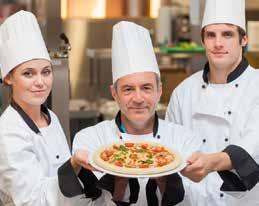
The whole company system is certified by application of Uni En ISO 9001:2008 and HACCP standards, providing a guarantee that high quality standards are fully implemented. Its sales network consists of specialized wholesalers, supported by skilled Area Managers and Chef Promoters, able to identify each and every opportunity to provide information and advice to users. Strongly oriented toward supporting its customers, Demetra has developed modern marketing tools, particularly the magazine
“La Voce di Demetra” , distributed to a list of over 10,000 subscribers.
2 production units located in the industrial zone of Morbegno-Talamona (Sondrio, Italy)
30,000 square metres of total space
12,000 square metres of covered facilities
+100 workers employed in the 2 production units
+ 8,500 pallet stations available
10,000 tons of vegetables processed
+100 sales staff members covering the territory (promoters, agents and area managers)
+500 worldwide distributors

While pondering what was the best approach to the writing of this article, I explored several possibilities: positive, negative, possibilist, conspirator... Each way would have followed a path that in part, while still seeking a virtuous approach, would have led to talking about the same companies, perhaps listed in a different order.
I decided to start with the clarity of the concepts (and examples) of Green Economy and Greenwashing applied to the world of food and beverage and then also to catering.I’m going to start with the dark side of green but not to foster suspicion and mistrust! I would like this first part to be simply the part where I illustrate the worst way to approach the topic.
Borrowing the words we have heard since childhood: ‘business before pleasure’!
Greenwashing certainly represents what many big companies should make amends for: using a noble purpose to improve one's image or - even worse - one's profits is not an approach from which I would draw an example, but it is not for me to pass judgement on what happens in the world of industry. Specifically, to give an example of which there is certainty in the sources, I cite the investigation ‘Unilever's Plastic Playbook’ (A Reuters Special Report) which caused a stir at the end of June 2022 because it implicated the well-known multinational Unilever, producer of food and non-food consumer products in an intricate blackmail scheme.
It seems that, in the food and soap/detergent sectors, Reuters journalists brought to the fore the news that Unilever, publicly committed to reducing the environmental impact of its most polluting packaging, had used its influence (locally) to pressure politicians and commissions not to pass certain environmental protection laws. These laws would have had a major economic impact on the multinational corporation's profits, with penalties and marketing bans on the very product lines that the company is eliminating in the rest of the world to reduce its environmental impact. Unfortunately, in some developing nations, these single packages are precisely the ones that are most profitable because they sell more pieces at a lower cost...
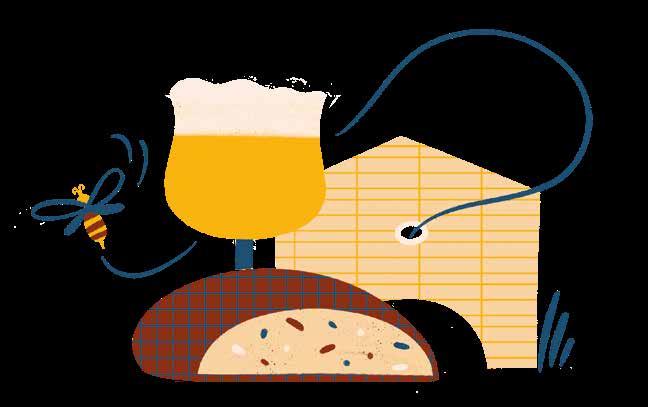
but at the environmental cost of being the most polluting! This example shows us how even the company that publicly appears to be the most attentive on the subject of ‘green’ can conceal a ‘dark side’ from which a completely different purpose can be discerned. Unfortunately, it is a system that is as common as it is ignored, because it needs an explanation that gets to the heart of something that has nothing to do with the heart... Should you wish to delve deeper, the survey can be found in free reading on the Reuters website.
Let us now turn to the Green Economy, looking for virtuous examples that are not the ‘usual’ façade of something else, but courageous stories of companies that try to ‘save the world’ with facts and daily commitment. A couple of Italian cases can be codified as companies that have been pursuing the goal of ‘saving the world’ in a sustainable and profitable manner for some time and, of course, are both open to external collaborations and participations!

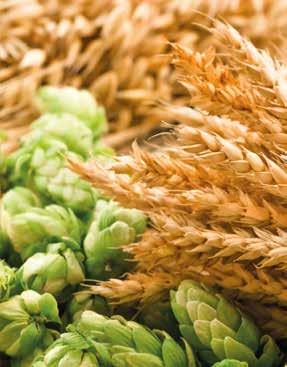
3Bee, a startup founded in 2017, aims to support the ecosystem of bees and Italian beekeepers through an integrated system with a very low environmental impact: for beekeepers, it has systemised technological innovation capable of monitoring the state of health and performance in the ‘harvest’. For private individuals, it offers the possibility of ‘renting’ a hive, tracking it online and receiving the honey produced by one's own hive directly at home, which is especially interesting for involving children. Lastly, 3Bee offers the opportunity for larger companies to integrate corporate projects that have a social and responsible relevance to introduce actions that have an impact on the wellbeing of the land and nature.
Green, but with a focus on productivity, the Biova Project is bringing an interesting innovation from Turin to a sector in constant ferment: the beer industry! The idea, as simple as it is ingenious, involves the company recovering unsold bread leftovers from project partners and using a production process to transform what would have been waste into excellent beer! This process, recovered from antiquity, takes us directly back to the historical evolution of beer. It seems, in fact, that the ‘first’ beer was born in Sumerian times precisely through the fermentation of bread and water in a poorly sealed wineskin. Biova started its activity in 2019 and proposed a circular reintegration of bread as raw material: each brew uses about 100 kg of stale bread, which reduces the need for malt by 30 per cent with an important economic and green spin-off, reducing the environmental impact of the final product on the raw material grown.

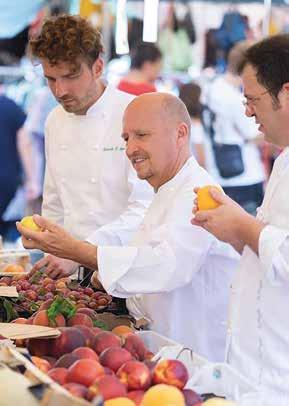
Wondering how a green approach could be applied to catering, in addition to the examples already mentioned last year in the issue of ‘Pizza e Pasta Italiana’ dedicated to the fight against food waste, I came across an interview in October 2022 with Heinz Beck, chef of the well-known Michelin-starred restaurant ‘La Pergola’ in Rome. It is interesting how his approach to environmental is organisational, social and economic. I quote: ‘In our restaurant we always know how many customers we have, we organise ourselves accordingly and there is no waste. We have always worked sustainably also as a matter of social responsibility.
Fifteen years ago, I started to apply the circular economy in the preparation of dishes and, many years later, today we use products from sustainable agriculture; 90 per cent of our fruit and vegetables come from biodynamic and regenerative agriculture'. Heinz Beck continues: ‘We order not by boxes, but by pieces or kilos, so waste is almost zero. Now we have developed a new system to avoid wasting raw material. For example, a cabbage arrives, is immediately cut up and the various parts are placed in different containers in special spaces in the refrigerator. In this way, the staff always knows where to take the part of the cabbage most suitable for the preparation of a certain dish. This also avoids waste due to carelessness that makes them use the heart when the outer leaves are perfectly fine. Most importantly, it avoids using the heart and throwing away the rest. If you have to run an activity that has to bring economic results - as well as quality - you have to be careful about everything that could be a cost; there are costs that are not avoidable such as energy, personnel, raw materials, but waste is an avoidable cost.


Never as in recent months have we experienced the consequences of the extraordinary events of recent years: pandemic and war have opened our eyes to how important every single gesture, conscious choice, investment in innovation can be for the survival of activities but also for their impact on the world at large.





If we tried to pay the utmost attention to detail and production processes, I am convinced that the collective impact of catering and hospitality could be increasingly green and economically sustainable: in our own small way we could try to change the world.’ thors did, that ‘the dishes now considered iconic of the Belpaese (Italy ed.) actually came from emigrants from America who returned to their homeland’ may also be true if one refers to the Carbonara that was served to customers in Armando's restaurant in Chicago, as Patricia Bronte recounted in one of her gastronomic guides from 1952, but for risottos, which are many and varied, it is enough to know the Venetian recipes from 1550 onwards and thus the various preparations of ‘stockfish’ (in Venice called ‘baccalà’ - salt cod), ‘moéhe’ (molting green crab), ‘sardines in savor’, etc., to know that they are dishes born in Venice; dishes born at home and not abroad. And, as in Venice, all over Italy.
We have taken Grandi and Soffiati's book as a pretext (which I invite you to read in any case) to repeat an invitation that this magazine has been making to cooks since the very first issues: the cuisine of individual places in Italy is a heritage of great historical and cultural value, as well as being the result of the long and serious work of many generations; a cuisine that has been able to overcome the severe test of history unscathed, adapting to changing times, tastes and nutritional needs without betraying its roots, and therefore should be considered in its own right as a cuisine of tradition. Presenting this cuisine to the world, in the forms suggested by good taste and aesthetics, is the task of the most serious restaurant industry, the one that cooks for customers and not to win a star, that does not churn out new dishes every year only to have them soon removed from the menu, because true great cuisine is only that which passes from one generation to the next and tells the story, culture and civilisation of a people.


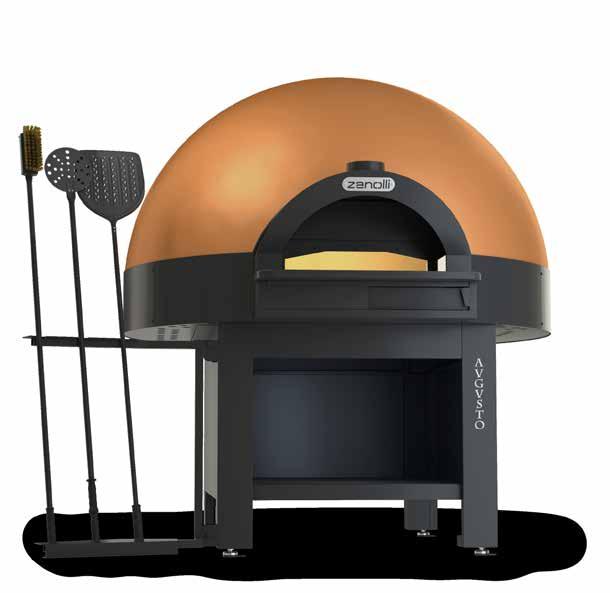

AVGVSTO is the first boutique oven that runs on clean energy. To cook any type of pizza. To simplify your work, eliminating excessive heat with the Air Trap System air blade. AVGVSTO 6 and 9 pizzas: today’s technology respecting the Italian tradition.
‘We make pizzas, we don't save lives’. This is one of the phrases often repeated by pizza makers who are more modest, more discreet and perhaps even more in touch with reality. A phrase that I clearly agree with. Then, one day out of the blue you get a phone call and you meet Corey Watson.
Corey is a political scientist who has focused all his work on the promotion of democracy, countering authoritarian regimes and war studies. After university, he became an engineer and computer programmer. ‘Then in 2017, after a trip to Italy, I realised that my life had been devoid of culture, living it only through a computer screen,’ Corey says. And this was when he approached pizza: ‘Let's be clear, pizza already made up 70 per cent of my diet but, until then, I had never really appreciated its possibilities.

Having tasted Neapolitan pizza for the first time in Naples, not knowing much about it, aroused my curiosity enough to try to decode it. For the next five years, this curiosity to make Neapolitan pizza became a goal, then an obsession and finally devotion'.
That is why Corey attended a course at the headquarters of the Verace Pizza Napoletana Association between 2021 and 2022 with the intention of opening his own pizzeria in Portland, Oregon. ‘My dreams, however, were suddenly put into perspective,’ he says, disorienting me.
‘Watching the images of war while comfortably in my hometown, I was inspired by the Polish families in the train stations setting up tables to serve food to Ukrainian refugees, as well as organisations like World Central Kitchen, who were at the border from day one. As the situation worsened, I felt more and more the need to do something and so I left for Poland, without telling my family, to start volunteering with World Central Kitchen at the Ukrainian border.


Last summer, I decided to move to Ukraine on a permanent basis to start Pizza for Ukraine'.
To date, Pizza for Ukraine has distributed 10,000 pizzas to needy Ukrainians. With more ingredients, equipment and funds, this mission can raise awareness of the war. All while building hope, solidarity and goodwill for Ukrainians. Currently, Pizza for Ukraine uses donor funds to buy ingredients and pay employees for food trucks in Kiev.
WHY BRING PIZZA TO A COUNTRY AT WAR?
Not many people know that pizza is a ‘war food’ which evolved under the constant invasions of 18th century Naples and as a response to the desperate circumstances in which the Neapolitans lived. Its strength, versatility and longevity are evident in its simplicity, price, speed and scalability of execution, and the love that making such a product requires. It is the most appropriate, appreciated and yet least served food in a conflict.
I believe that pizza is mankind's favourite food, found in every corner of the globe except the frontline of democracy.
HOW HAS THE PIZZA FOR UKRAINE PROJECT CHANGED SINCE THE SUMMER OF 2022? It has definitely matured with the changing situation in Ukraine, it has changed according to the resources available and the opportunities we had. When I started, in the summer of 2022, I simply bought pizzas to take to the shelters in Dnipro. Then, in September 2022, I started making and selling pizzas to raise money for a local charity at a festival in Lviv, ordering pizzas in for orphanages and children's hospitals in the city.

BY ANTONIO PUZZI
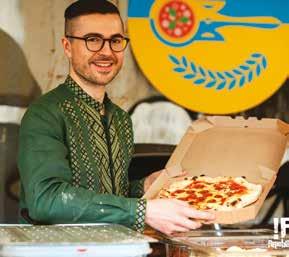
IN THE FILM ‘LIFE IS BEAUTIFUL’, ROBERTO BENIGNI TRIES NOT TO LET HIS SON, DEPORTED WITH HIM TO A NAZI CONCENTRATION CAMP, EXPERIENCE TRAUMA. YOU DO SOMETHING SIMILAR... I try to, we have to try, it is our task. When I'm outside Ukraine, for example, I give pizza lessons to displaced children in Dnipro and I set up food trucks in Kiev to serve pizza to residents in the invaded suburbs.
I KNOW THIS WILL SOUND LIKE A TRIVIAL OR, WORSE, SUPERFICIAL QUESTION, BUT I'LL ASK IT ANYWAY: WHY DO YOU DO IT? Like both of my grandfathers who fought in World War II, one for the United States of America and one for Britain, it is impossible not to be here in Ukraine and feel the same responsibility. For most of those outside Ukraine, the thought is probably that this war will end when one side wins or loses. But for those of us who heard the call and came to volunteer, we see this only as the beginning of a great power struggle. What we do now matters more than anything else and will influence the shape of things to come.
YET ONLY THREE YEARS AGO A CONFLICT INVOLVING THE WORLD'S SUPERPOWERS IN EUROPE WOULD HAVE BEEN UNTHINKABLE, ALTHOUGH WE HAVE LEARNED NOT TO BE SURPRISED BY ANYTHING ANYMORE. The word we often use to describe our experience here is surreality. Terror and beauty coexist side by side. Normality in the midst of bombs is simply a way of life. One minute we can have dinner in a great restaurant and the next minute a bomb arrives and we are in a blackout. Then they give us blankets, candles, a reduced menu and we go on living. We do not feel guilty about enjoying life, even knowing that there is the greatest hell on earth only a few hundred kilometres away. On the contrary, we feel a great sense of pride and solidarity because we are all united for the same goals: supporting Ukrainian culture and saving lives.
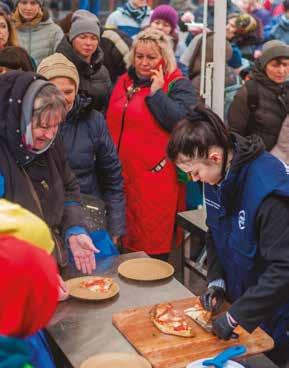

IT STRIKES ME THAT YOU MANAGE TO USE AN EXPRESSION LIKE ‘ENJOYING LIFE’ AND, TO BE HONEST, BESIDES ADMIRING YOU, I FEEL A HEALTHY ENVY FOR WHAT YOU DO AND YOUR SPIRIT.
Focusing on the positive aspects of life in such a strong, rich, diverse and united country is not the same as shying away from the dark times. We have seen the destruction, experienced the explosions, lost friends, been to their funerals and felt the despair. Yet, the saddest part of all this is that we have become used to it. This is our normality.
‘Normality’ is the word I don't want to get used to, that we cannot get used to. It cannot be normal in the 21st century to live in a world where fathers bury their sons, to live in a country where the one who risks his life is not the one who decided to fight but the one who was sent to the front line, sometimes without even having chosen a military life, to realise that even those who are entrusted with making culture have a short and labile memory when it comes to war stories.
And so, for all of us, perhaps it is good to re-read the words of one of the greatest narrators – unfortunately for him - of the events of the Second World War:
You who live safe In your warm houses, You who find warm food And friendly faces when you return home. Consider if this is a man Who works in mud, Who knows no peace, Who fights for a crust of bread, Who dies by a yes or no. Consider if this is a woman Without hair, without name, Without the strength to remember, Empty are her eyes, cold her womb, Like a frog in winter. Never forget that this has happened. Remember these words. Engrave them in your hearts, When at home or in the street, When lying down, when getting up. Repeat them to your children. Or may your houses be destroyed, May illness strike you down, May your offspring turn their faces from you.
IT WAS 1947 AND HIS NAME WAS PRIMO LEVI.

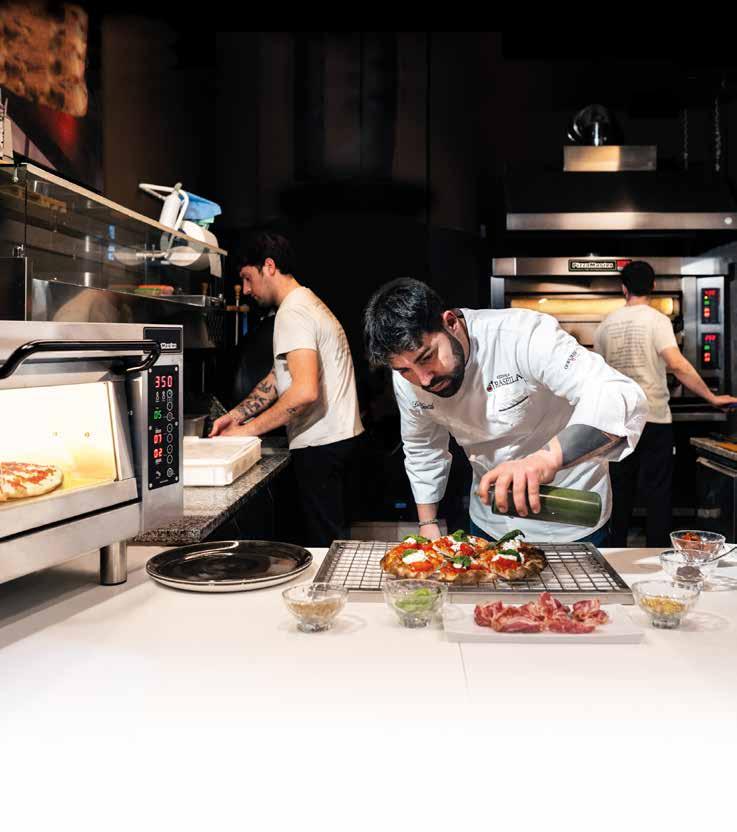
The Largest deck oven range in the world
85 different sizes, more than 1 500 models and 1 000 000 oven combinations always ensure and optimum oven solution.
Super high power and efficiency give unparalleled capacity
Up to 500°C / 932°F baking temperature, short recovery time and low operation cost give more revenue per footprint.
Consistent baking result
Stable bake temperature and smart heat control give a fantastic and consistent bake result for all types of pizza.
Reliable performance and trouble-free ownership
Highest quality parts ensure a long and troublefree lifetime through over engineered design.

How many times have you happened to read on a pizzeria sign, on a website, menu or on a flyer the words ‘wood-fired oven only’. A slogan that in the mind of those who read it is automatically associated with Neapolitan pizza or more generally with a good pizza, made according to tradition. A phrase that for many pizzerias is used as a claim, almost as if to emphasise in the words ‘only wood-fired oven’ a strong corporate value, synonymous with quality and goodness, with mastery in making pizza. A true marketing lever in some respects. If you think about it, emphasising belonging to tradition is as if you were saying loudly ‘look, I make pizza the way it should be made’. The same thing happens abroad, where the term ‘wood-fired’ is used almost as a seal of quality and works like a magnet, probably by association with the classic Neapol-
itan pizza, but not always with the desired results. But does an excellent pizza really only come from a wood-fired oven? Or are new technologies able to match the result? The wood-burning oven for bread and pizza was for years the undisputed baking tool, also capable of giving style and personality to the product itself, thanks to the small burns, different types of crispiness and that woody aroma that enriches the bite; but, over the years, the ill-regarded electric oven has improved in quality and been successfully adopted by pizza makers. Today, there are more and more pizza makers who are abandoning wood for other forms of baking, such as gas and electricity. There may be many reasons for this, one of the most common being the impossibility of using a wood-burning oven due to the lack of flues, storage space to store the wood, and the expense of running it.
ALTHOUGH IN ITALY, COMPARED TO ABROAD, THE WOOD-FIRED OVEN IS STILL DOMINANT. CAN YOU IMAGINE NAPLES WITHOUT IT?
‘If pizza in the world is to be called Neapolitan, then it must be baked in a wood-fired oven’. This is Antonio Starita's statement in an interview in the last issue of Pizza e Pasta Italiana. And this is also one of the rules of the international specification for the Vera pizza napoletana, whose baking ‘takes place exclusively in wood-fired ovens for 60-90 seconds where the chamber temperature is around 485 °C’. That it is the wood-fired oven that makes pizza, especially Neapolitan pizza, is of course a myth and perhaps not always entirely true. The success of a pizza obviously does not depend

on its cooking instrument alone; fire is not the magic wand that turns any pizza into a good pizza. What makes a good pizza is everything behind that disc of dough before it is baked. There is the study and realisation of the dough, the adaptation to the climatic conditions of the environment, the perfect alchemy between blends of flours, yeasts and hydration to obtain lightness and digestibility, there is the choice of raw materials and then finally comes the baking. And no mistakes are allowed, if you don't want to ruin all the previous work. Type of oven, temperature, humidity, timing of exposure to heat all play a crucial role, as much as the other production phases, for the success of the product to be obtained.
CAN WE SAY THEN THAT THE WOOD-FIRED OVEN REPRESENTS A FALSE MYTH, A CLICHÉ (ONE OF COUNTLESS) IN THE WORLD OF PIZZA? DOES WOOD-FIRED BAKING REALLY YIELD A BETTER PRODUCT THAN AN ELECTRIC OR GAS OVEN?
There are those, for example, who see the gas oven as a challenge, while for many the future of pizza is the electric oven. A thought that makes many shudder, as we can imagine. But the new generation ovens hold surprises in store; the technology and the many specialised companies have taken great steps forward, so we can have ovens that simulate both the shape and environment of a wood-fired oven, ovens that modulate the temperature at different heights.
But most importantly, pizza makers can adapt electric ovens to their needs by playing with the temperature. This is because the heating that occurs through the heating elements allows different temperatures between the base of the oven and the top, depending on their arrangement
and setting. This allows very precise and modulable baking according to one's own dough, thanks also to the possibility of controlling humidity offered by the most modern ovens. Furthermore, in this type of oven there is no combustion with its residues, as there is no open flame, and the same temperatures are reached as in the best wood-fired ovens, with the great advantage that they can be maintained in an absolutely constant and controlled manner.
SO,
The flame oven works on the violent oxidation of oxygen on a fuel, whether wood or gas. The combustion generates carbon black, a nanometric particulate that covers the entire oven and ends up on our pizzas.
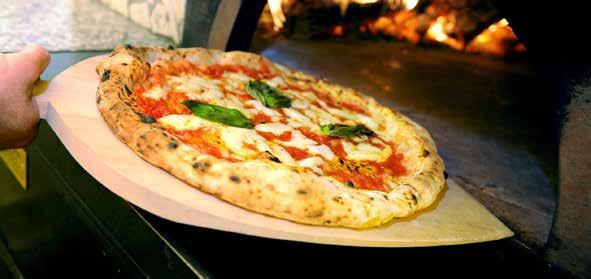

This particulate is disputed because it is considered carcinogenic by the World Health Organisation, but it has always played a fundamental role in pizza baking. It enriches the taste of pizza with its typical smoky aroma that varies depending on the wood that is burned (wood that must be certified for food use). In particular in Neapolitan pizza made with a dough of only 00 flour, water and salt, the smoky aroma gives more flavour (an aroma that can also derive from a badly cleaned oven). Whereas a pizza made with a dough from stone-ground semi wholemeal flours in which the flavour of the wheat is pronounced and pleasant, does not need the aromaticity of smoke, which would cover its flavour nuances, but is also perfect in an electric oven. This is when you get a more precise cooking process, perhaps a little aseptic, but one that enhances the ingredients and does not allow any flaws to be masked. If we look at the world of contemporary pizza, we have only to admit evolution and improvement. And at the same time, a traditional pizza can be cooked indiscriminately in an electric oven or a gas oven.

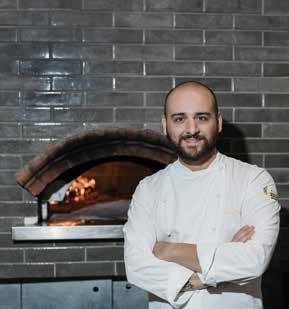
Just as certain conspicuous burns and strong flavours from the flame are considered a mistake.
If the true Neapolitan pizza maker remains faithful to the wood-fired oven, especially if he or she respects the specifications, the contemporary pizza maker who loves to experiment between types of flours, doughs and pizzas is, on the other hand, also a user of all types of ovens, with which he or she experiments with cooking. It follows that the oven responds to product research and needs. So to better understand which oven works on certain pizzas, we asked Luca Pezzetta, a great experimenter in the world of leavened products:
‘In my Pizzeria Clementina in Fiumicino,’ he tells us, ‘I have all types of oven and I can assure you that I have tried many. I am of the opinion that it is the pizza chef's task and skill to be able to choose which oven is best suited to his or her product, based on what results they want to obtain. The most important thing is that whichever oven is used, there must be respect for the prod-
uct and towards cooking, which is fundamental for a quality result'.
From traditional Roman pizza to pan pizza, slice or focaccia, as well as colombe and panettone during the festive season, Luca Pezzetta is passionate about his doughs and emphasises: ‘pizzas that follow the bread-making methods, i.e. using pulish, pre-dough and sourdough, give better baking results with an electric oven that respects the product from the point of view of acidity, aroma or humidity. Electric ovens have more variables and you can really enjoy them. Then for those who make Roman pizza like me, this is done exclusively in the wood-fired oven, where the water in the dough evaporates better thanks to the openings, unlike the electric oven which retains more humidity with the result of a wet pizza which is too soft towards the centre'.
‘It always depends on what you have to do,’ Luca continues, ’cooking in a wood-fired oven is unrivalled in terms of time, with the temperatures reached and constant, cooking times are minimal and during a service you can make over 300 pizzas, quantities that you cannot always manage with an electric oven. In this latter case, the cooking times are slightly longer and, after a hundred or so pizzas, there is a physiological collapse and the product does not maintain



























the initial standard. But if you have to standardise a product you can't use a wood-fired oven, you need something that you can regulate, modulate, that can give you a consistency and crispness that is always the same, that is aseptic, that is without aromas, without burns and all those customisations that are of the woodfired oven'.
So, in conclusion, if it is true that a good pizza, and there are many, can be made with gas and electric ovens, the undisputed superiority of her majesty the wood-fired oven ceases to exist and the statement of the mere presence of a wood-fired oven in a pizzeria no longer makes sense. In this contest between tradition and technology there is no winner, as it depends on what we want to achieve and on our personal taste. Rather, that formula that for years made us think that good pizza can only be had with wood-fired cooking, and that today is just an obsolete and somewhat anachronistic phrase, loses its communicative form.


The Verace Pizza Napoletana Association approves the rotating oven, a system that allows several pizzas to be baked at the same time, conveniently managing their rotation, with an objective saving of time, a concrete increase in productivity and impeccable quality results. ‘Technology to support quality,’ says Antonio Pace, President of the Verace Pizza Napoletana Association, ‘is one of the fundamental assets that identify our association. This is why we are constantly striving to improve product quality and at the same time to support our pizza makers, in terms of time management and optimisation of results. This commitment is realised with the approval of the use of the rotary oven, which is certainly not a substitute for the static oven but an interesting alternative. We have of course tested this tool and appreciated its accurate baking management, thanks to its innovative functions such as speed control and temperature maintenance.’
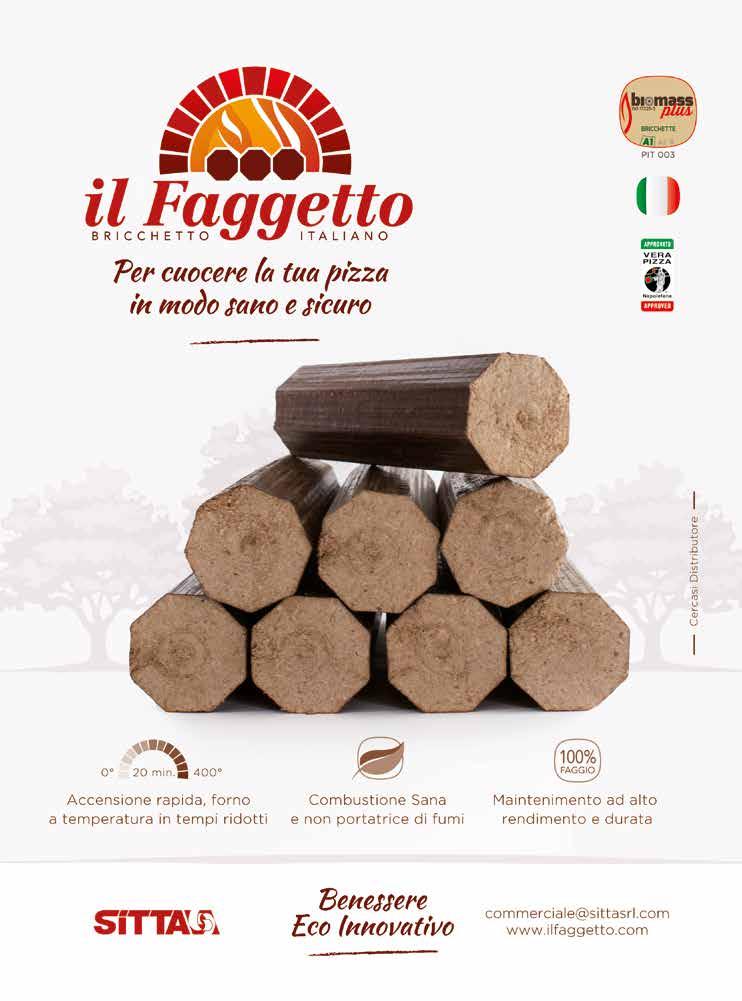

Victoire Gouloubi: the cuisine

There are still too many barriers separating man from the human being. Still too many people think only of themselves and do not consider others. There is one world and we are - or should be - one big community, breaking down distances and unfounded fears. The concept of ‘diversity’ is a real, tangible problem that needs to be eradicated. Victoire Gouloubi, an award-winning chef of Congolese origin, fights for this every day, with only one weapon: food. In fact, she says, ‘food is the only common denominator for peace’ and it actually does not hurt or offend, but includes and unites.
The chef, a proud black woman, offers African haute cuisine that speaks of her land and her adopted country, Italy; she speaks of herself, of racism and inclusion, of fairness and of a ‘battle’ that can be fought with taste. Victoire’s words are strong, reading them at times is painful but they also make you think. That is exactly what one should do: pause to reflect and internalise.
Victoire, tell me about your cooking: how difficult is it to combine African and Mediterranean flavours?
My cooking tells my professional story but also my life story, which are linked. I was adopted by Italy but I come from a continent that is the cradle of the world. It tells of my past and my identity as an African woman, but also the woman and professional I have become in Italy today. Regarding ‘how difficult it is to combine’, first of all, you have to talk about ‘African cuisines’ and not ‘African cuisine’. Africa is a huge continent which in itself encompasses, in terms of surface area alone, the entire European and American continents. It is one of the largest in the world and we talk about ‘cuisines’ because there are of course various countries. If I said to an Italian, ‘what is European cuisine like?’, the answer would be that ‘Italian is the best’.
Everyone identifies with their country, their origins and roots. African cuisines are many, varied and different from north to south, from east to west. So, it is difficult to combine our cuisines, especially mine, with the western, Italian territory.
Italy still finds it difficult to have an equal exchange on Afro-Caribbean gastronomic identities. I come from central Africa, a country crossed by the equator, the products are typically summer and tropical, difficult to find, and therefore, we Afro-Caribbean chefs somehow adapt some of our recipes with products from the same families that we find here in Italy. For example, the aubergine, which has many varieties: in Africa there are dwarf aubergines, some red, some yellow, and each of them has a different flavour
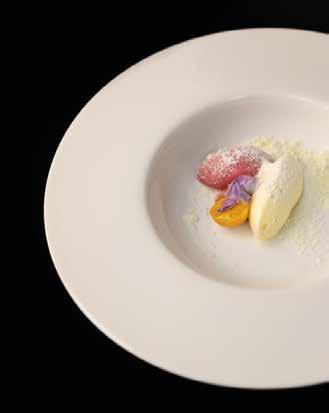
and ripeness, though an aubergine. So yes, it is difficult, but not impossible.
Why are African cuisines somehow mistreated, compared to all others?
I think they are stigmatised. You have to start from the beginning. If the African human being is not accepted, how can the cuisine be? The latter is our identity: when we see an Italian, we recognise them not only by the way they speak and dress but also by the way they are at the table. Italians are gluttonous people who love tradition, family, good company and pizza, which is known throughout the world because the Italians promoted it. The same happens with Afro-Caribbean people. If they are continually stigmatised, seen as those who create problems, how can there be an openness on Italy’s part to get to know their cultures, their food? If there is no approach to knowledge, no curiosity to understand what is on the other side of the world, the other countless riches of Afro-Carib-

bean cultures will never be known. That is the problem. But we should start from the basics, that is, right from the schools. Just as we teach children that there are summer holidays and we can go to the beach, we must teach them that there are other continents, where there are countries, where there are people with many cultures.
The principles of culture are fashion, art, music and food. This is the first common denominator of peace and the first language that human beings use to communicate. When a mother brings a baby into the world, she does not need to say: ‘come and eat’; she attaches it to her breast and feeds it. The baby recognises that gesture from the language of food. It is the single most powerful element in the world by which people do not need to exchange words; they know that all they
have to do is exchange plates to communicate.
Speaking of culture, what does your cooking want to express and communicate? It communicates me. It is not megalomania but I think I represent many women, many men of my own identity and origin. I tell first of all about our wonderful land: Africa, the land of us all, because that is where the human being was born. We always hear about the white, Caucasian man who travelled the world and ‘discovered’ it, like Columbus with America. But it is the same person - the Western human being - who places limits on himself in the knowledge of others. He discovers, but does not want to know. He goes and takes but does not want to return what he has stolen. My cooking communicates all these struggles, the joy of becoming a chef in Italy, because this is where I trained and became a professional. I travelled the world to continue learning, because you never stop. I recount the beauty of having created a new life, because I am a survivor. I come from a country that was torn apart by two wars, after the Rwandan genocide, which is one of the biggest in the world, but it is not talked about. We only hear about the Shoah, never about Rwanda. Everything that happens in Africa is swept under the carpet, people musn’t to see. What happens ‘over here’, on the other hand, is news to the whole world. I want to tell that. Africa is not what you see on TV: moulded as poor, pitiful. My cuisine, in short, tells the story of the beauty of Africa and Italy.
Tell me about Uma Ulafi and the award dedicated to Diego Schiappone, a young man who loved the ancient grains of Africa. Uma Ulafi (‘gluttonous fork’) is the international fair for the discovery of African
gastronomic cultures. I came up with this concept because I noticed that we, who are a ‘minority’, are not promoted properly. Those who are, are used as examples to say: ‘we are not racist’. Uma Ulafi wants to promote Afro gastronomy in Italy but also in the world. It serves to say that we have always been there. ‘Uma’ in Swahili means fork and the pastry fork was invented by a black slave woman in 1891. If we go and see what Africans, blacks in the world have created, Italians have no place. With this I do not want to create any division, it is a reality. For this special edition I created the award in honour of Diego, this young man we love so much and who, unfortunately, passed away last September: he was very young, 26 years old. I never met him in person, it was a virtual relationship with someone who had a crazy love for Africa, he lived there. While he was there, he fell in love with ancient African grains, with the flours of Africa, and when he returned to Italy with his parents, his dream was to be able to help the women who worked the land and produced flours. He did this in silence. Today there are tractors but in Africa the biggest harvest is done by hand, mostly by women, with great effort. When Diego opened his pizzeria, many of his fellow pizza makers made fun of him for using African flours: ‘We are Italians, we created pizza, you should work with our flours, you use these, but who knows them?’ they said. Today, many intolerances have developed, especially to gluten, even in children. There is pollution, pesticides are used. In Africa we have virgin land, which makes up forty per cent of the unused land. It is a great power to be lucky enough to be able to promote these grains. The ancient ones today are called ‘super food’, they have discovered them now but we have
always had them, we have grown them. We have flours extracted from the tuber that can outlive even man, which does not need water, resists 40°C heat in the sun and is spontaneous. As they say: the earth lives without man, man without the earth does not. Diego silently helped those women and the battle I am facing is to promote all the actors that revolve around the African food and wine world. The second edition of Uma Ulafi is dedicated precisely to the celebration of the earth. What better way to celebrate those women than by paying homage to Diego?
When you arrived in Italy, how did you overcome sexism and racism that you experienced and that you are probably still experiencing?
I think that people don’t really overcome prejudices and battles related to sexism. People try to say, ‘it’s not my problem’, but it exists. I don’t know if I have really overcome them. What I have always done is fight with the right weapons. The problem has never been me, I did not choose to be a woman and be born black but if I could, I would choose it a thousand more times, in another thousand lives. I am happy to be a woman, happy to be black so whoever sees a problem in me is themselves the problem. People who struggle with

non-existent problems put up walls for themselves, like in Berlin. They who create problems must find solutions, but they would not have to look for them if they did not create them. I think that to overcome the struggles we experience, it is not only necessary to focus on a goal but to raise awareness. Because by doing so, by re-educating those who wage this war against us, someone would end up listening and changing.
How would you define freedom?
We each have our own but I think mine, for me, is the chance to express myself, to live, to do everything as I please without bothering others.
You once called the kitchen brigade ‘a pack’, in what sense?
Human beings in society live in packs, we are animals, the challenge arises where people create ghettos. When I started, 23 years ago, they were
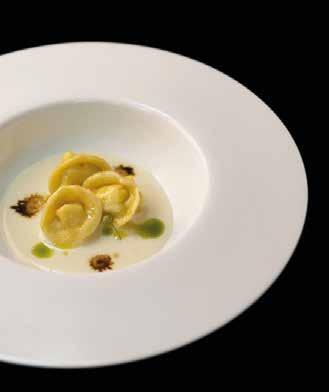
BY NOEMI CARACCIOLO
animalistic. A ‘pack leader’ who has no reason for being so, maybe not even five years of study, thinks they have to work with force to get a good result. I believe this is still how it is, however. So much so that the restaurant industry is suffering from a lack of staff, and it’s not only due to Covid but above all to the problem of communication, of behaviour in the kitchens. It is essential that chefs go through a process to understand their subordinates’ needs.
Is there a dish or an ingredient that is symbolic?
I don’t have a dish that represents me. In the beginning I could talk about my creations, today I also identify with the products. Being a complete chef means promoting ingredients. Certain elements such as shea butter, manioc tubers, fonio (defined as a gluten-free super-cereal, ed.) or spices are fundamental in my kitchen... and bear in mind that talking about ‘spices’ does not necessarily mean talking about spiciness. After all, even salt is a spice and isn’t it always used in Italy?
Speaking of ethics and inclusion, how do you see the catering of the future?
It’s a complex question. I honestly don’t know, although I would like to have that answer.
I think you have to take life as it comes, things are constantly changing. Who could have imagined how much relationships between people would change after Covid? More social, less human relationship, distance etc. I am sure a lot will change with evolution but we will find out together.

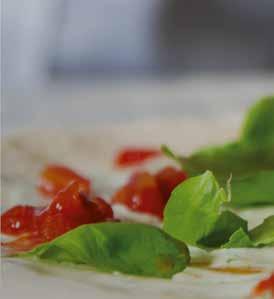





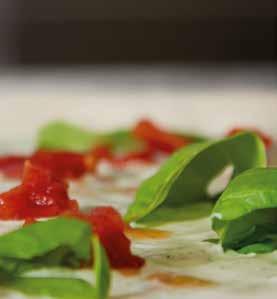

It is 2020, Covid-19 period, not easy for anyone. Francesca Marotta, daughter of Geppy Marotta, founder of “Fratelli La Bufala”, returns to the family business to make her contribution after studying in Milan. Marotta senior had started his adventure in 2003, founding what became one of the most representative companies of “made in Italy”, in Campania and worldwide. ‘Actually,’ says Francesca, ‘he had started with “Rossopomodoro”, after which, for various reasons, he opened “Fratelli La Bufala”. Both ideas had a very precise purpose: to bring Neapolitan pizzerias and trattorias to the world; however, the latter had an added value, that is, to focus on all produce from Campania, buffalo mozzarella and, of course, pizza, focusing on the quality of the product but, above all, on fundamental social values. My mother, an architect, has always taken care of the structures and logo. Dad passed away 10 years ago’.
Over time, the company has expanded continually, giving rise to projects whose value exceeds all expectations immensely, but let’s go step by step, because Francesca will tell us about this later. In 2018, the logo underwent a restyling, bringing it more in line with what was the market of the moment. The focal point is Naples but Milan isn’t doing too badly either, where the menu is obviously a little different: the products are the same but the menu changes according to local tastes; in Milan you can find a fit menu for example, with dishes such as buffalo carpaccio or buffalo yoghurt. It is well known that - yes – “Fratelli La Bufala” focuses on pizza, but it was also born with cuisine and, in fact, it does not fail to bring the Neapolitan and Campania tradition to Italy and the world through it. Regarding values, “Fratelli La Bufala” focuses greatly on social issues, on the environment, and it is for this reason in particular that I had the pleasure of inter-
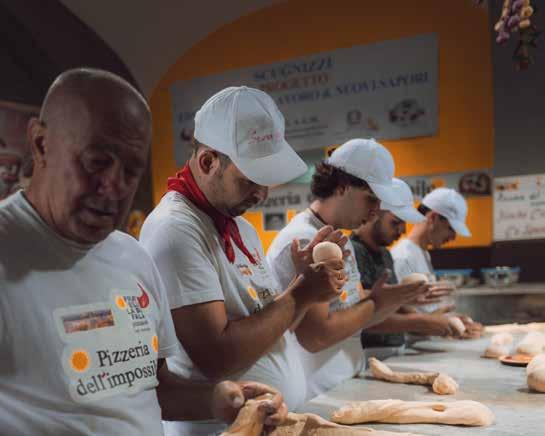
viewing Francesca Marotta who, in addition to having a role linked to the family heritage, is also the company’s Marketing Executive.
From what I learnt, she did not like to ‘advertise’ certain things, but the reality is that she should have done so from the outset, as the commitment she shows, together with all those who revolve around the company, is an example of humility, generosity and ethics for everyone.
Francesca, there are many premises: what is the identity that unites them and what are the pluses that distinguish the Fratelli La Bufala brand?
Structurally speaking, each location has the brand’s distinctive traits: the oven tends to be on view, the mozzarella tree known as the bufalata, the shield with the horn, etc. But, since we do not like the idea of a ‘chain’, each one is autonomous and has its own identity, from its menu to its style, worked on by one of
our artists. Each one is very much adapted to the area it is located in; for example, in Reggio Calabria we told the story of Scylla and Charybdis. Since we talked a lot about Partenope, being Parthenopean, we liked the idea of linking it to another mythology. Italian identity is important, but so is the identity of each location.
But, beyond the restaurant sector in the strict sense, you are also very attentive to environmental and social sustainability. I know you invest a lot in this, tell me how.
Our main sustainability project started in 2011 with “where there is pizza there is hope”. It is a workshop inside the Nisida prison where we train young people who we hire as pizza makers once they get out. Every day they do two hours of pizza training so that they can then be reintegrated into the working world. In 2013, there was a turning point for the initiative with the opening of “La Pizzeria dell’Impossibile” in the historic centre of Naples. Here, in addition to continuing training for some young people once they
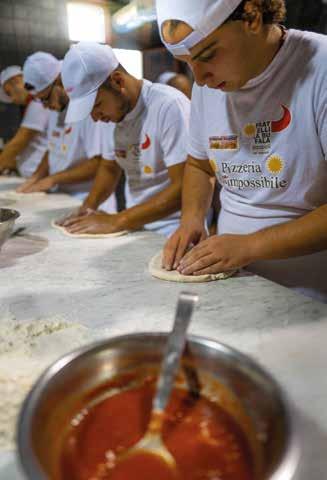
leave Nisida, we also train others at risk. Young people who are in the criminal circuit but still in time not to end up in prison. But not only that.
My father had a dream, which was to feed all those in need: that’s why the pizzeria is also a sort of soup kitchen but different. In the sense that it has all the appearance of a pizzeria. The young people practice in the morning, then open and serve the tables. Whoever comes in does so with dignity. They sit, sometimes with their families and children, and they order either a Marinara or a Margherita, a coca-cola or water, living the experience of a pizzeria, but without paying the bill.
You are the example that through pizza you can create a fairer and more inclusive world and, also, that you can redeem yourself, something that not many people believe.
In fact, we have never wanted to communicate much, by choice. My father really did it for charity and of course it still is charity, but since this is the most important project we have (you can read the emotion on Francesca’s face), I really cared about it, I was sorry to see others communicating things much less real than this, and us nothing. In this way, by communicating, a positive flow has been created and we have had the chance to get to know other organisations, with whom we can exchange examples. The fact that this initiative has been going on since 2011 means that it is very real. We collaborate with the association “Scugnizzi” which coordinates everything with the young people. Our master pizza maker goes there every day and

opens three times a week, from 12:00 to 14:00, churning out a hundred pizzas a day. Our suppliers support us and I won’t hide the fact that the choice of partner often depends on this too, in that I prefer those who are in line with our values and this project.
Also, regarding the environment, in 2020 our engineer patented a sustainable oven, with an internal burner that allows us to maintain the temperature, do classic wood-burning but with a low environmental impact that reduces the production of smoke and soot by 90%. In 2022, we started supporting a new start-up project on aquaponics, an above-ground farming technique with which we aim to produce Neapolitan basil for our pizzas. We thus save 98% of water and redevelop the “Terra dei Fuochi” territory.
Basically, you requalify the land and the people.
We care about this very much. We are also partners of “Too Good To Go”, on the topic of food waste, even though it is
little understood in Italy. To avoid waste, we have express cooking. All our partners tend to reflect our values. Our greaseproof paper, for example, is recycled, as are our placemats, etc.
Let’s say that you have somehow redefined the whole pizza industry, Naples and, to some extent in general, the restaurant industry, through various commitments, be they social or environmental, by simply bestowing sound principles. On this basis, how do you see the future of this world?
That’s a good question. This world is peculiar, certainly very dynamic and competitive. I think, or rather I hope, there is a return to real things. In the sense that unfortunately, over the years, communication has digressed too much in my opinion, and has given voice to people who did not deserve to have it. I believe and hope, however, that people need to return to true values, to sound principles. We really risk a lot if we don’t get back on the right path. I think my father had already imagined this. When “Fratelli La
BY NOEMI CARACCIOLO
Bufala” was born, there was a phrase from Sitting Bull written on the premises: “When they have polluted the last river, cut down the last tree, caught the last bison, caught the last fish, only then will they realise that they can’t eat the money accumulated in their banks”. It’s a phrase I remember from when I was a child, it was written in almost every FLB, which was born in this spirit. These have always been our values and we have always carried them with us. In a different way because the world has changed, but still I hope for a return to the real and the genuine. I have high hopes because I have seen many young people, including Neapolitans, who believe in it. They do not want to overdo it, which is often counterproductive, there are those who “do well”.
Returning to the Pizzeria dell’Impossibile, I know that watching over those present is Judas of Thaddeus, the patron saint of impossible causes which you, however, make possible. One example is Daniele Gagliotta who, after Nisida, became a “pizza-star” so to speak. There are so many young people. I know them personally, some are my age, others are younger. Now, for example, we have two boys, both coming out of Nisida, one just turned 18 years practically with us, so we hired him officially while the other is finishing his training. Then, Matteo who is now at Via Medina, Vincenzo Cordella who worked in Milan for many years and is moving to Rome. Another guy at the “Campania” shopping centre who also makes 1,200 pizzas at the weekend and therefore works a lot. Then, of course,
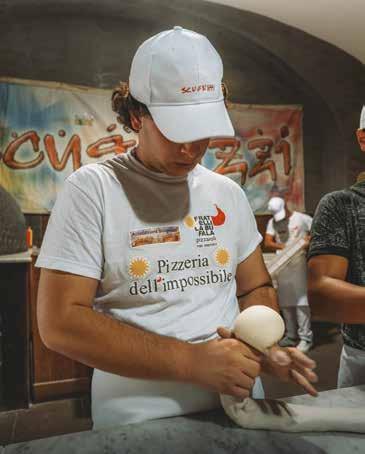
there are guys who don’t work with us, but we have trained 300 people and at least 190 work, some for us and some not. There are also those who want to do something else. Even Daniele himself actually, in the end, after a series of openings for us, decided to stay in Mexico, have his own family and be a consultant. Many of these stories were told in the RAI series “Mare Fuori”, for which our guys were interviewed.
Francesca you have to tell me: what does it feel like to know that you have basically “given back life” to someone, offering a concrete possibility for the future? Every time I look at Matteo I don’t know (her eyes light up), I can’t tell you, it’s perhaps the greatest satisfaction I have. Sometimes I wish I could just devote myself to that! It gives you immense satisfaction to know that someone has found his dimension, so saving himself. I mean,




it is an indescribable thing, it gives you a lot of hope and also a lot of strength. Sometimes it gives me life too. I like to go often to Nisida to see the boys, to know their stories, to understand who they are. Unfortunately, there are also those who cannot be helped.
I imagine that yours is not an easy endeavour and that you “get attached” and always hope for the best but, in this regard, I think you have also experienced situations of disappointment. Many, unfortunately. The young men often almost have to be removed from Naples, because the context really does make a difference. Even guys I had bet on.
I’ve only been here four years, but I won’t hide the fact that I have rejoiced to see those who saw their sentences being resolved, when they were free to do what they wanted. But then I also saw them relapse again and again, and that is bad. Often you cannot help them.
You cannot save everyone, that is common knowledge.
You are not with them all the time, you cannot control them in a certain way unfortunately.
This mission is a double-edged sword,
actually.

Exactly, yes. In the beginning it was very difficult to communicate this, also because at one time this was all very new. Whereas today we hear about these initiatives in the ordinary, but 12 years ago it was an innovation. Today the social theme is more fashionable, it is more understood so to speak. We obviously exclude a couple of crimes, including violence against women and the Camorra. We focus on everything else, which is a lot actually. Since I joined, I’ve seen the average age drop and it’s not good.
Kids from all over Italy come to Nisida, it is the largest and most populous juvenile prison in the country. Now there is no longer a female part, they had to split them up because it was no longer manageable to keep them in the same facility. There, we often do corporate events, including Christmas lunch, because it is actually a really magical place.
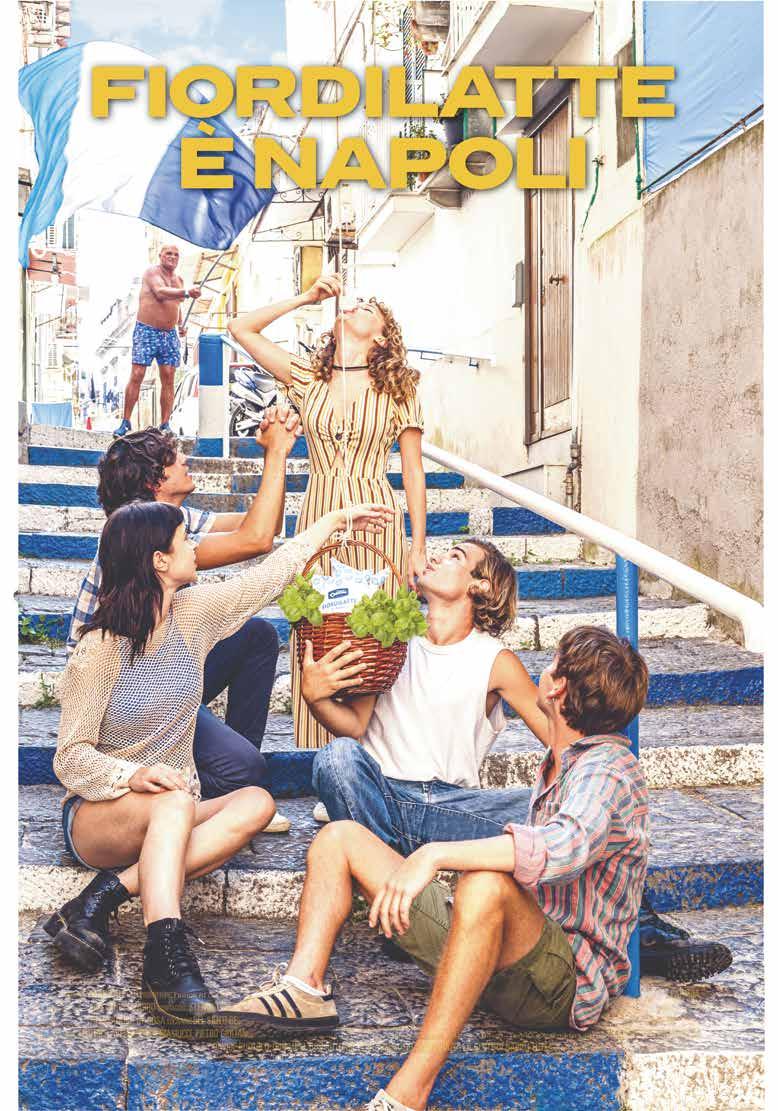
BY
I must say that the boys are also lucky in a way, because they are trained and experience a beautiful place. I always say that Nisida is the gift that Naples has given the boys.
Other nice projects for the future
This year we are very open to collaborations. We are trying to collaborate with many Neapolitan initiatives, for young people who want to “do well”. Last year, with “Salumeria Malinconico”, we created the “Bufala&Friends” format, which aims precisely to valorise small and large Neapolitan realities, starting with the products, tradition, and Neapolitan character. The idea is to do this also with others, although for now we have focused on who we know best. In short, positive collaborations with people who share our values. Then, we are trying to invest in the theme of masterclasses and give people the opportunity not only to come and eat but also to test themselves. Touching our products with your
hands, rather than just seeing them, is a good thing.
What is your favourite pizza?
I really like the Cosacca, it’s really very good. Apart from that, it depends a bit on the menu; for example, I currently prefer the Cilentana: aubergines, yellow tomatoes, Cilento cacioricotta cheese and almonds. In pizzerias, in general, however, I always try the Margherita.
If you wanted to give someone advice on how to approach the future despite the problems?
You definitely need a lot of patience and perseverance, believing in what you are doing and in the goal you want to achieve. Young people are often very hasty, they want everything and right away but, before achieving, you have to build. Patience - which I don’t really have, I’ve done a lot of work on myself - is very important. In general, things need their own time.
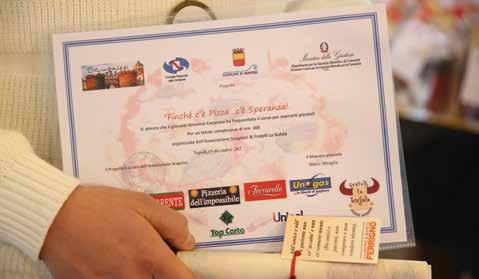

BY ANTONIO PUZZI

For every hectare (2.47 acres) of land cultivated in Italy, 5.2 kg (11lb 8oz) of pesticides are used, compared to a European average of 1.57 kg (3lb 8oz) per hectare. This figure, however, should not mislead us because fortunately this is balanced out by the agricultural area used in organic farming. With its 2.2 million hectares (5.4 milion acres), our country can in fact boast 17.4% of the land allocated to ‘organic’ production, confirming its position as one of the top 10 organic food producing countries in the world and ranking first in terms of number of producers (and third in terms of agricultural surface area) in Europe.
In the last 10 years, Italian soil has become considerably greener: +96.3% in organic areas and +80.7% in the number of operators compared to 2010, but it is also true that more than half of the surface areas are concentrated in just five regions: Sicily, Apulia, Tuscany, Calabria and Emilia Romagna, mentioned in descending order. And it is equally true that the average surface area of organic farms in Italy is medium-large: 28.6 hectares (70.6 acres), despite the fact that the average national surface area of a farm is 8.4 hectares (20.8 acres). Ours is in fact a country where agriculture is still mostly family run and very small-scale, and this vast majority of farms escapes detection because, in some cases, even though they cultivate without the use of pesticides, they prefer not to tackle the complex path to organic certification. But why is organic so important? Firstly, because we have been talking about the impact of pesticides on human life and biodiversity for some sixty years; second-
ly, because consumers are increasingly turning to certified production, spending much more to bring a product with ‘certified authority’ to the table.
The credit for having tackled the issue of pesticides at an international level for the first time goes to biologist Rachel Carson, who in 1962 denounced the prophecy of doom about the disappearance of biodiversity in her work ‘Silent Spring’. To tell the truth, Italy had played its part in this too: in the 1950s, in fact, our agronomist Giuseppe Candura had feared the damage of DDT, which would be banned first by the USA in 1972 and then by Italy in 1978. The problem, however, is not only linked to the possible carcinogenicity of pesticides (as emerged for DDT) but to a number
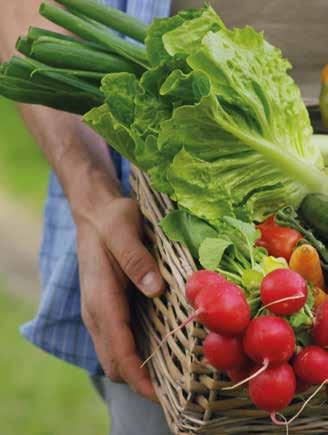
BY ANTONIO PUZZI
of other factors, and the three main ones are summarised below:
01 Pesticides cause the removal of ‘friendly’ insects, i.e. those that can fight plant pests;
02 The cost of pesticides is constantly rising: suffice it to say that from 2006 to 2016, spending on their purchase rose by 50%;
03 Approximately 385 million cases of pesticide poisoning occur worldwide every year, particularly in the southern parts of the planet.
With regard to the third point, it must be said that poisonings can be of two types: due to the lack of use of personal protective equipment while working in the fields, but also due to the residues that these treatments leave on food. In fact, a recent report showed that when samples of food produced by conventional agriculture were analysed in 2022, only 54.81% were free of residues, while 14.31% had one residue and 29.89% had two residues. However, pesticides really are everywhere: some claim that one only has to look for them to find traces of them even in the most unexpected places. A few examples: in playgrounds, school gardens and public spaces, particularly significant traces of pesticides have been found in spring and summer; in Germany, on the other hand, out of 163 organically cultivated sites analysed, 138 showed traces of airborne pesticides.
To all this data, however, must be added at least two others highlighted by a 2021 study:
1- In organic fields that have not undergone any treatment, there is a 129-fold increase in pollinators’ frequentation of the flowers (useful for the planet but also to fight off harmful insects);
2- There is no variation in yield under certain conditions between organic and conventionally farmed fields.
One might say: on top of the harm, there is the mockery!
But then who does it benefit? Almost certainly not us!

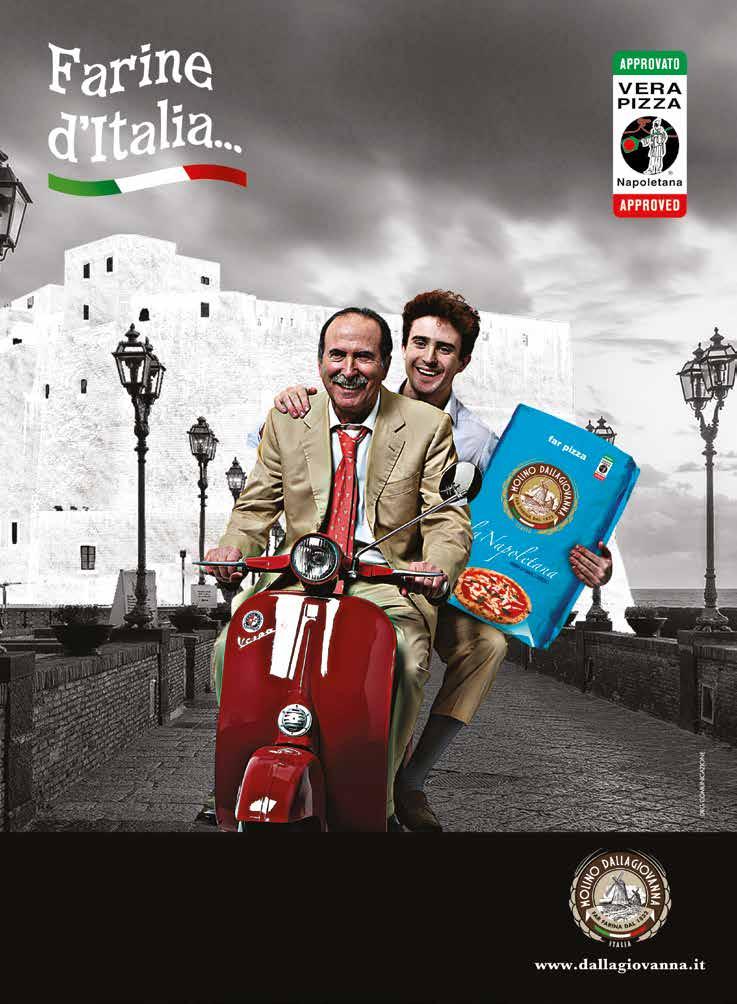

BY ANTONIO PUZZI
This is why the ‘Let’s change agriculture’ coalition (coordinated by the main producers‘ and consumers’ associations concerned with the environment, agriculture and animal welfare) has made the Pesticide Atlas, a valuable document from which we have taken the data you have just read, accessible to everyone from its website. It was produced thanks to the support of ‘Heinrich Boll Stiftung’ in Paris, ‘Friends of the Earth - Europe’, Fondazione Cariplo and ‘Pesticide Action Network’.
The aim is to make everyone understand that another agri-food system is not only possible but necessary. Also for the non-negligible reason that 78

consumers are willing to pay more for food with a ‘green’ label. As data from the SANA Observatory showed, organic food sales in the Italian market in 2022 reached EUR 5 billion (or 3.5 per cent of world organic retail sales). The market growth was mainly driven by out-ofhome consumption, which exceeded 1 billion euros, marking a growth of +53% compared to 2021, the result of the average between collective catering (+20%) and commercial catering (+79%), while home consumption remained more or less stable (-0.8%).
In an article a few years ago for the weekly ‘il Venerdì’, the anthropologist Marino Niola - who is the author of the book ‘Homo dieteticus’ among other things - recalled that ‘The civilisations that preceded us sacralised the elements of subsistence. Bread, wheat, wine, oil, meat. Not to mention the memory of San Francesco’s nostra sora acqua. It was, in fact, a religious certification. A consecrated denomination of origin’. We, on the other hand - according to Niola‘have made traceability an item of faith’.
As if to say: we have shortened the gap between ‘organic’ and ‘God’. But we did it so as not to become extinct: all in all, for a good reason.

Italian Excellence and Patenopean Heart from the soul of the maestro pizzaiuolo Edoardo Ore was born Fiore di Napoli, the flour of Neapolitan pizza created with Molino Colombo to satify the needs of realizing a neapolitan fried and baked pizza. The first step has been an accurate selection of the best cereals and seeds with an high technological value and intense aromatic component, which has brought to a specific blend, studied and balanced by Eduardo Ore, Maestro di Farine. Then we used a diagram with 24-pass mills, unique and exclusive, such as that of Molino Colombo, which guarantees, with its gentle and slow milling, the maximum enhancement of the technological, biological and aromatic characteristics of the grain, preserving starches and proteins and leaving intact the aromatic bouquet of the endosperm, the heart of the grain. A ductile flour with a specific ratio of elasticity index, strength, extensibility, toughness and protein content was thus obtained, giving doughs a silky effect with extraordinary workability and hold, as well


as an unmistakable fragrance present at every stage of processing, from the mixing of ingredients to the bite of the cooked product. The specific and calibrated quality of the enzymatic activity in the maturation processes, both during leavening and in the complex baking phase at 480°, lead to the achievement of a Neapolitan, golden, soft, aromatic, fragrant, chewy and highly digestible pizza.
79
Fiore di Napoli is the quintessential Neapolitan pizza flour capable of enhancing the dough to the fullest, both because of the kneading technique of the ancient Neapolitan school, indicated in reg. 97/2010 of the STG specification, and because of modern methods that require flour with high protein quality and high propensity for absorption. Fiore di Napoli celebrates the art of Neapolitan pizza that have become an Unesco World Heritage Site, an Italian excellence with partenopean heart. Destination of use: ideal for the production of Neapolitan pizza with leavenings at 25°C for 14/28 hours and with the cold method at 5°C for 24/48 hours.
The concept of ‘cooked and ‘raw’ in the world of beer is much more heartfelt than one might imagine: just think of the meaning given to these terms, both from a production and a communication point of view. In order to better understand how to use these two terms correctly, we have to start with the definition of beer. Beer is an alcoholic beverage obtained from the fermentation of a wort prepared with water, barley malt and other cereals, such as wheat or rice, to which hops and yeast are added. Beer can only be called such after alcoholic fermentation due to the action of yeast on the sugary wort.

The term ‘cooked’ regards all the stages of beer production, which can be summarised in six main steps:
1. Grinding of the malt to obtain a coarse flour;
2. Mixing the ground malt with hot water to obtain wort;
3. Boiling of the wort with the addition of hops to impart the characteristic aroma and bitterness to the beer, as well as the spices dictated by the recipe
4. Cooling of the boiled wort;
5. Fermentation of the cooled wort with yeast to produce the alcohol, carbon dioxide and aromatic and taste characteristics of the beer
6. Maturation and packaging of the finished beer.
At the heart of production are the infusion of the grains in hot water (mashing) and the subsequent boiling, the two stages in which the wort is produced. This is the actual cooking of the wort (not the beer), which is the only heat treatment applied to the liquid before it is transformed into beer. This concept is valid for craft beer, which by law cannot undergo pasteurisation treatment. The latter represents one of the discriminating factors in identifying a craft beer product, which by law can be defined as such if, precisely, the beer is unpasteurised, microfiltered, produced in an independent brewery and with an annual production limit of 200,000 hl (5.28 million gallons).
One of the big differences between craft and industrial
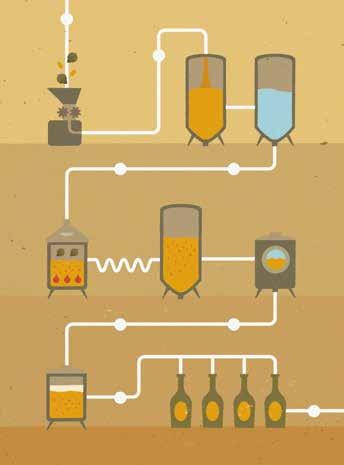









beer is precisely the cooking of the beer, a process that only takes place for industrial beer. The term ‘raw’ is intimately linked to the latter concept, that of pasteurisation. Indeed, the definition of ‘raw beer’ is linked to the absence of heat treatment of the beer (not of the wort), which only occurs in the world of craft beer. However, this alone is not a sufficient condition to define beer by the term ‘craft’, given the above description of this term. The world of the brewing industry often uses terms in its communication that may lead one to think that beer is craft (raw beer, unfiltered beer, etc.). The only weapon in the possession of the consumer, but also of the operators in the sector, to defend themselves against misleading messages, is knowledge of the regulations in force, which allows for greater awareness, helping to recognise the characteristics of the beers on the market.












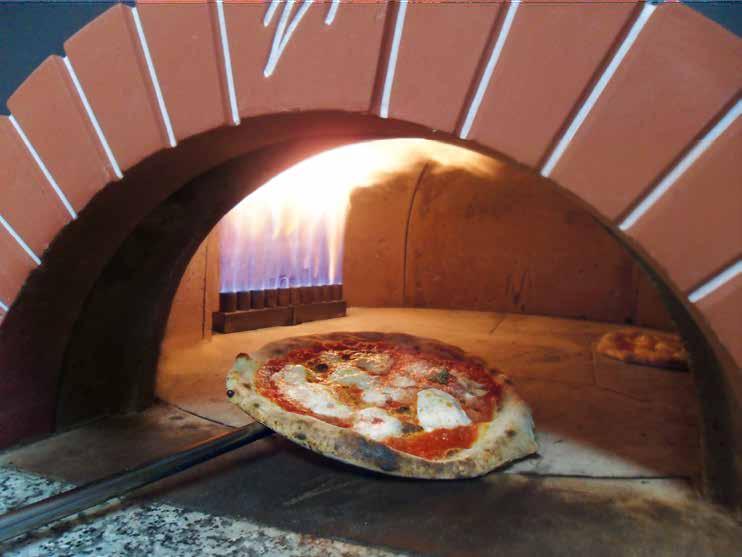


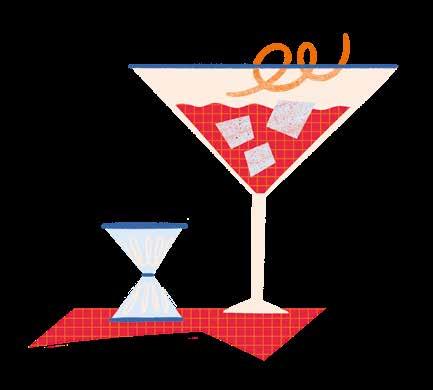
this time it is I who am writing to a reader. After having carefully read the May issue of Pizza e Pasta Italiana dedicated to mixology, I asked myself: ‘but what on earth is this mixology’? Perhaps there is a piece missing and so I ask you to answer my questions.
Thank you for whatever you can do. Nio
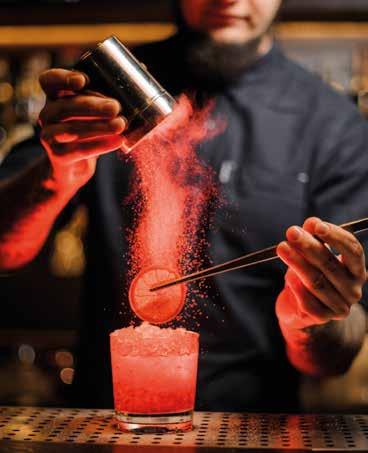
with guilty delay (but it has been a busy few days), I will try to answer your questions analytically.
1. Let’s start with the basics: what is a cocktail and how does this ‘alchemy’ come about?
This seems like a banal question, but it is the one that everyone should ask themselves before approaching both the preparation and the enjoyment of a cocktail. Unfortunately, from what I see around, it is evident that almost no one asks themselves this question any more, and those few who do so, do not know the right answer, given the very low general profile of the creations of the last 15 years. The following are the results of the basic errors of these wrong answers, usually along the lines of:
- on the part of the creator: ‘I take ingredients at random - as long as there are some strange or exotic ones or with an unpronounceable name - so that I can show how original and good I am at researching rare products’
- by the uninformed consumer: ‘I go to that one because he makes strange cocktails, different from the usual ones, so I feel more exclusive’.

In reality, the answer is very simple: a cocktail is the balanced mixture of two or more elements (seven at most, counting drops and powders) in which, thanks to the knowledge and skill of the person who mixes them, the sum of taste is greater than the value of the individual components. In other words, if you know the raw materials and have the ability to assemble them harmoniously, both from an olfactory and chromatic point of view, you are well on your way to creating a good cocktail; then, if in the drinker you provoke an emotion that goes beyond taste, you have achieved the alchemy of the perfect cocktail.
2. Are there totem and taboo ingredients in the preparation of a cocktail? The totem ingredients in the creation of a cocktail are the spirits that serve to create the alcoholic base on which the aromatic part is then developed with the use of fruit or spice liqueurs or with fresh
fruit and its derivatives such as juices, syrups and pulps. It would be a good idea to use only one type of distillate in the creation of the recipe because the taste is all about the other elements in the recipe. The fashion that has spread among younger consumers of asking for cocktails with more than one distillate together stems from specific ‘ignorance’ on the subject; the most widespread case is that of the 5 whites, where the popular belief is that the sum of 40° proof vodka + 40° proof gin + 40° proof rum + 40° proof tequila + another 40° proof distillate to taste makes 200°proof, while in reality the sum is 40° proof!
3. Making cocktails with good, fresh produce: can it be done or is it too much to ask?
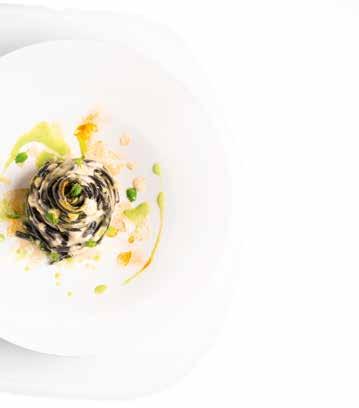
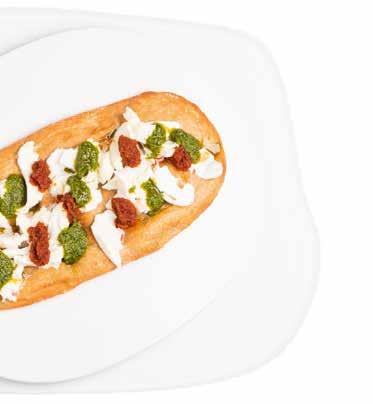

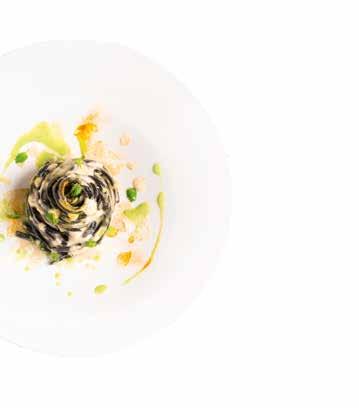

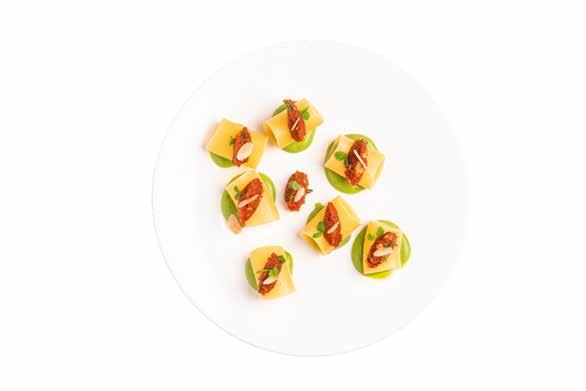
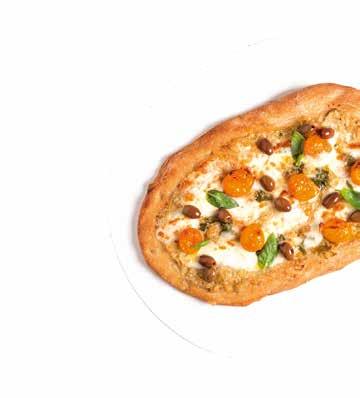



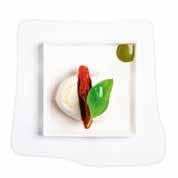
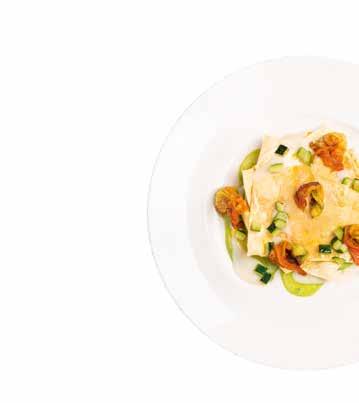

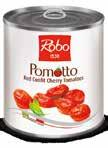
Not only can it be done, but it would be a good practice to follow the seasonality of fruit and also to enhance that of one’s own territory where possible and available.
4. Can cocktails be paired with pizza?
88
The answer is: yes, of course. But a premise is necessary. Contrary to what is becoming a clumsy attempt to ‘be cool’ - which we unfortunately witness nowadays, also due to the lack of preparation of both those who propose them and the public - for each type of dough and filling a tailor-made drink must be studied, where the elements of both the pizza and the drink must enhance each other. This is not exactly a novelty given that, in 2015, in collaboration with the bar tender and chef Francesca Mannis from Falerna (Catanzaro), we did a presentation seminar in London on this very topic, in a context where a few dozen pizza chefs from all over Europe were present and where the fundamental cornerstones for a successful combination were also explained.
5. For years there has been a lot of attention towards ‘mixology’: how would you define it and why?
Actually, the world revolving around the American bar (a cult place par excellence of mixing and socialising from the 1960s to the end of the millennium) has always been at the centre of attention, not only for cocktails but precisely as a social phenomenon of custom. Just think of the phenomenon of the paparazzi hunting for scoops on the outings of ‘VIP’ couples

and the very important role played by the great barmen (as they were then called) not only of the big hotels but also of the historical bars and clubs. With the tran sition to the new millennium, we have gradually witnessed the decay of all the basic rules that governed that world and which we can summarise as:
- welcoming and savoir faire
- empathy
- well-defined and respected roles (the customer is sacred and the bartender’s aim was to make them experience an evening as a protagonist and never treat them superficially)
- what happens inside the bar stays inside the bar (it was called discretion)
- replicability of recipes ‘urbi et orbi’ (a Negroni had to taste the same in Florence, Rome, Paris, New York, Berlin, Singapore, Tokyo. etc.).
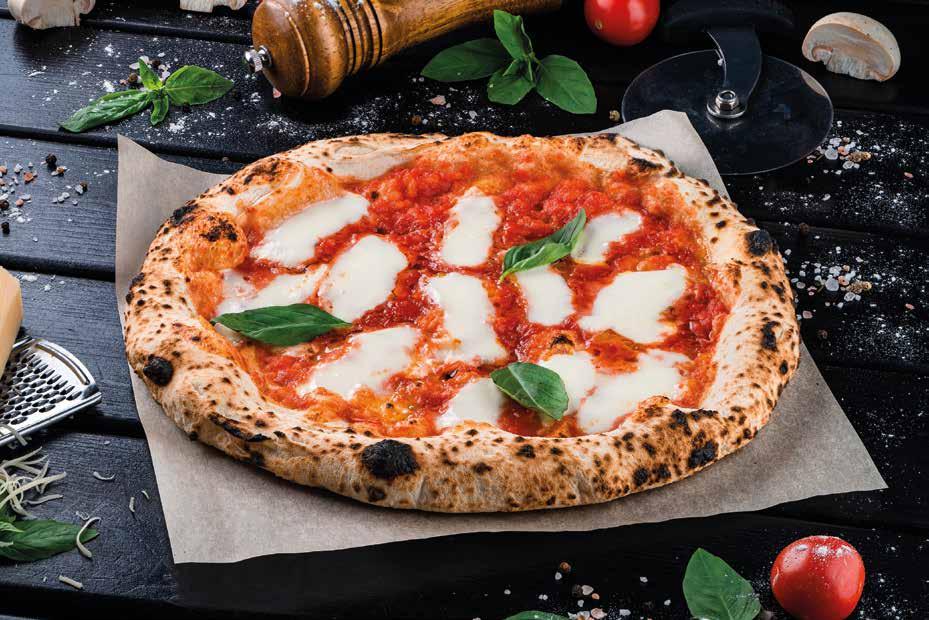
Today we are witnessing a completely different phenomenon: in very many cases, the aforementioned rules no longer apply;


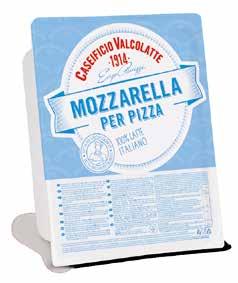



there is no longer a ‘sacred’ respect for recipes, rather there is a frenzied race to see who can do it the strangest; behind the bar, there is almost no longer the bartender who does their best to discreetly satisfy the customer, but the ‘mess-ologist’ who rises to the occasion to put on a show and demonstrate their (in)competence, flaunting their supposed skills in ‘revisiting’ classic cocktails without knowing that, not only in the world of cocktails, varying ingredients has always created different results, even if only in terms of proportions. See, for example, Gin and Vermouth dry that give rise to the most celebrated cocktail of the 20th century with its various facets, depending on how they are prepared: I am talking about the historical cornerstone ‘Martini Cocktail’, whose ‘sacred’ recipe is ¾ Gin with an alcoholic strength of over 55° and ¼ French Vermouth dry. Then there is the ‘Gibson’, ⅚ of Gin and ⅙ French dry Vermouth; ‘Hemingway’ with
11/12 Gin and 1/12 French dry Vermouth; the ‘Montgomery’ with 15/16 Gin and 1/16 French dry Vermouth; ‘In & Out’, French dry Vermouth to wash over the ice and drain it and 6 cl Gin.
Nowadays, however, there is talk of nothing but twists, reinterpretations, ‘on a whim’ interpretations, the use of homemade products but without having the courage to give a drink a new name. It’s a bit like a chef saying ‘I make pasta with tomato and basil to keep it “simple” but with a raspberry sauce and mint leaves’! My thought is that this just creates a lot of confusion that has no prospects for the future, because the consumer soon gets tired of fashions and, above all, in time, gets fed up with having to specify when ordering a ‘banal’ Gin & Tonic that it is Lime, Gin and Tonic Water.
Michele Di Carlo

92
Several scientific studies have shown that a healthy and balanced diet, rich especially in certain nutrients, can help our organism rid itself of the states of both physical and mental stress and anxiety to which we are subjected every day. An important job interview, an employer who puts us under pressure, a complicated family or personal situation, etc. are, in fact, all conditions that can generate a state of stress and anxiety in our bodies, whether we are directly aware of them or not. Chronic stress can create a general inflammatory state, which provokes a series of responses in our organism, including an increase in pro-inflammatory cytokines, ageing and cell damage, adipocyte (fat cell) hypertrophy, metabolic syndrome, altered lipid and glucose metabolism,
increased cortisol which causes an accumulation of fat in the abdomen, hypertension, insulin resistance (it is no coincidence that the most stressed people are those with a higher body mass index and prone to obesity), intestinal dysbiosis with possible mood alteration, increased psychological stress and anxiety (gut-brain axis and two-way

A good diet can help lower blood cortisol levels, the stress hormone, and raise levels of serotonin, the good mood hormone. According to the World Health Organisation, stress is one of the most common health disorders in the population. In Italy, for example, it affects about 9 out of 10 people, very often accompanied by disorders such as weakness, exhaustion, anxiety, insomnia, migraine and depression. Many studies have shown that psychological stress can also negatively affect our heart health. Furthermore, repeated exposure to social stress can alter the diversity and composition of the gut microbiota, along with by changes in microbial metabolites, cytokines and other substances, which regulate behaviour by stimulating the peripheral and central nervous system. If we are experiencing a stressful situation, eating the right foods may help us feel a little better. There are, in fact, certain nutrients that have a beneficial effect on our mood and help us reduce physical, mental and nervous tension.

We are mainly talking about:
OMEGA-3 FATS
- B-GROUP VITAMINS
- TRYPTOPHAN (AN AMINO ACID FOUND IN MANY PROTEINS, BOTH ANIMAL AND PLANT)
- ZINC AND MAGNESIUM
- TURMERIC, a ‘magically’ powerful spice, helps reduce stress. It contains curcumin, an active ingredient capable of reducing anxiety, which acts on brain health and oxidative stress in particular, protecting cells from free radicals. Curcumin can support omega-3 fatty acids in the brain by helping to synthesise them more efficiently. In addition, anxious people have a low level of antioxidants in the blood and curcumin helps their increase in circulation.
Foods containing these nutrients can help the body and brain at times when we are particularly under pressure. Always remember that food and emotions are closely related, the properties of the foods we consume also have an effect on our mood, as well as our health.
To get omega-3 fats we can eat
-OILY FISH (ANCHOVIES, SARDINES, MACKEREL, HERRING, ETC.).
The consumption of oily fish is one of the best natural anti-stress remedies and also lowers cholesterol. In fact, oily fish contain phosphorous which protects the nervous system, and vitamins B5, B9 and B12 which enable us to fight fatigue and calm our nervousness. Their consumption activates the secretion of melatonin, which improves our sleep and regulates stress.
Oily fish are also extremely rich in omega-3, an essential fatty acid in our body that regulates neurotransmitters and inflammation, and promotes healthy brain function.
-TUNA AND SALMON;
-OILS DERIVED FROM FISH, SUCH AS COD LIVER OIL;
-NUTS, SUCH AS WALNUTS AND ALMONDS
-CHIA SEEDS, FLAX SEEDS, SUNFLOWER SEEDS, ETC.
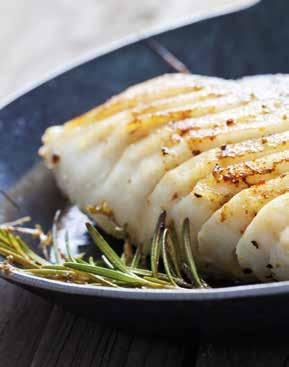

To consume B vitamins, we can eat:
-LIVER;
-EGG YOLK;
-MEAT;
-MILK AND DAIRY PRODUCTS.
A 25 g (0.9 oz) portion of cheese, for example, fulfils 37 % of an adult's vitamin B12 requirement. This vitamin is essential for the production of red blood cells and bone marrow formation, fundamental above all for children’s development.
To consume tryptophan, we can eat:
- YOGHURT;
- MILK AND MATURE CHEESES, which provide the greatest amount of calcium, a mineral that is beneficial for bones, teeth and is involved in balancing the nervous system, blood circulation and regulating the heart rate. In addition, lots of proteins with high biological value, including tryptophan, as well as B vitamins and antioxidants such as vitamin A, zinc and selenium.
- FRESH FISH, ESPECIALLY FILLETS OF BREAM, SOLE, COD OR HAKE
- EGGS;
- SOME OFFAL, SUCH AS LIVER AND BRAINS OF CATTLE;


- DRIED FRUITS SUCH AS SWEET ALMONDS, CASHEWS AND WALNUTS, as the phytosterols they contain play an important role in cardiovascular health and therefore stress.
- ZINC AND MAGNESIUM, on the other hand, are found in many foods, both of animal and plant origin, such as whole grain cereals and wheat bran, pulses, dried fruits (almonds, walnuts, hazelnuts, pistachios) and seeds, fresh vegetables, especially green leafy ones (beets, artichokes, spinach, courgettes, etc.), fresh fruit, such as kiwis, bananas, plums, oranges, apples, pears, etc.
- HONEY which has soothing properties, so has a positive effect on our mood. It calms the nervous system thanks to its trace elements such as calcium, potassium and magnesium and helps combat stress, fatigue and depression. Honey also accelerates the production of endorphins and so favourably influences anxiety.

Stress, unfortunately, can’t be prevented. We often cannot have total control over it, but we can certainly learn to manage it. To do so, we must learn to carve out some time for ourselves every day, to do what we enjoy and what makes us feel good. We must try to organise our day by avoiding overloads of commitments, whether work-related or personal. Regular eating: never skip meals and plan for small snacks or snacks so as not to arrive at main meals too hungry, risking nervously eating too much food and quickly gaining body weight, risking overweight and obesity. Try to plan the
week's meals to avoid ready-made foods that are too rich in salt and fat; often when the mood is deflated, there is little desire to cook: in these cases, it is better to have a simple, undemanding meal. Limit coffees or herbal teas such as the day's tea and soft drinks containing caffeine. However, take care not to consume more than three cups of espresso per day. Have dinner at least three hours before going to bed. Having a full stomach disturbs rest. The heavier the meal, the longer it will take to digest it.


Avoid fatty and very spicy foods. When people are stressed and overwhelmed by a huge number of things to do, they often tend to sacrifice their sleep immediately. By sleeping an adequate number of hours, we allow the body to find new energy and vigour, ensuring that it is able to get going again every day. Try to get an average of 7-8 hours sleep each night. Regular physical activity is certainly one of the best ways to relieve stress, because during exercise endorphins are produced, i.e. chemicals produced by our brain that have a natural analgesic effect, ‘similar’ to that of morphine. A nice walk in the open air, a bike ride, a swim in the pool or at
the beach are activities that can help us release tension and, above all, take our mind off things. Relaxation disciplines, such as yoga and Thai chi, and breathing exercises or meditation can also certainly help us reduce stress levels. In fact, relaxation techniques have been associated with preventing and reducing the recurrence of cardiac events. Finally, psychological support from an expert (psychologist or psychotherapist) is undoubtedly useful to learn how to manage stress and free ourselves from situations that cause us too much physical and emotional tension.
PIZZA E PASTA ITALIANA
Monthly food and food culture magazine
Published by
PIZZA NEW S.p.A.
With permission of the court of Venice n.1019 del 02/04/1990 n.9/bis, October, 2024 English Issue
Repertorio ROC n.5768
EDITORIAL DIRECTOR Massimo Puggina
EDITOR
Antonio Puzzi ADVERTISING
Caterina Orlandi
EDITING OFFICE
30021 CAORLE (Venezia) via Sansonessa,49 Tel.+390421 212348 Fax +39 0421 83178
E-mail:
redazione@pizzaepastaitaliana.it
follow us www.pizzaepastaitaliana.it
GRAPHIC DESIGN
Manuel Rigo, Paola Dus — Mediagraf lab
ILLUSTRATIONS by Giulia Serafin
PRINTING OFFICE MEDIAGRAF SpA
Noventa Padovana (Pd) - ITALY
EDITORIAL AND TECHNICAL COMMITTEE
Marisa Cammarano, Alfonso Del Forno, Caterina Orlandi, Caterina Vianello.

ASSOCIATED WITH THE ITALIAN UNION FOR PERIODICAL PRESS FOR
ADVERTISING OF FOREIGN MAGAZINES
ITALIA Pizza e Pasta Italiana
U.S.A. Pizza Today, P.M.Q.
–
TEL +39 0421 212348
FAX +39 0421 83178

Molino Forzani is seeking distributors in order to introduce its flours to global markets. To this effect, it relies on a range of top-quality products that meet the most demanding requirements. Located in Santa Fe, Argentina, the company has developed processes based on precision-driven technologies to ensure the consistent quality of its products. This work is performed by two top-notch labs specialized in analyzing physicochemical and rheological characterizations of products and byproducts.
“The precision of this equipment allows the company to comply with the most stringent quality standards worldwide to meet our own demands and those of our clients”, stated Franco Forzani, Operations Manager. In addition, Molino Forzani has recently opened an experimental bakery fitted with technology that simulates the bread-making processes of our clients. “The labs and the bakery provide us with the analyses required to ensure the stability of our products”, he added.


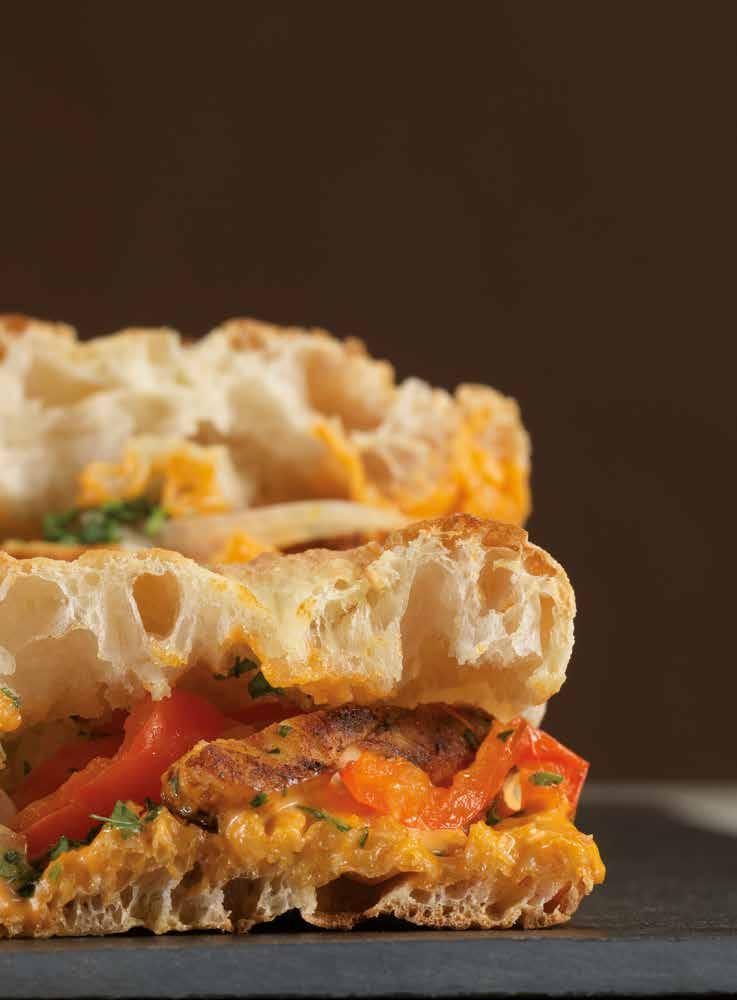








Since 1990, Pizza e Pasta Italiana has been the Italian magazine of reference for professionals working in the pizza sector. As the organiser of international events such as the Pizza World Championship, Pizza e Pasta Italiana magazine tells the story of pizza over time, in Italy and in the world, through scientific articles, interviews with professionals, thematic insights on toppings, ingredients and specialities, processing techniques and new trends, with a constant spirit of service towards the restaurateur.
Slices is a print and digital publishing project that continues to grow by looking into some of the basic raw materials to make pizza to perfection. "Slices" of culture for professionals only, offering them a practical and immediate tool to progressively contribute to spreading knowledge of raw materials, processing techniques, technologies and the most suitable tools to prepare, with passion and love, one of the most loved dishes in the world.
Fourth Year:
/Pizza, naturally Part 11
www.pizzaepastaitaliana.it